Sage green’s subtle earthiness and grey’s cool sophistication create a partnership designers are calling the calm-seeker’s dream palette for 2025. When the two meet in a living room, the result is balanced, grown-up, and wonderfully adaptable: grey grounds the scheme, while sage green breathes in softness that feels like open windows on a spring morning. Because sage is being hailed as the “new neutral,” you can layer it confidently with woods, metals, or brighter accent shades without fear of dating the décor. Ahead, explore fresh, practical ways to let a grey and sage green living room become the serene heart of your home.
1. Soft Sage Accent Wall Sets Off Charcoal Grey Seating
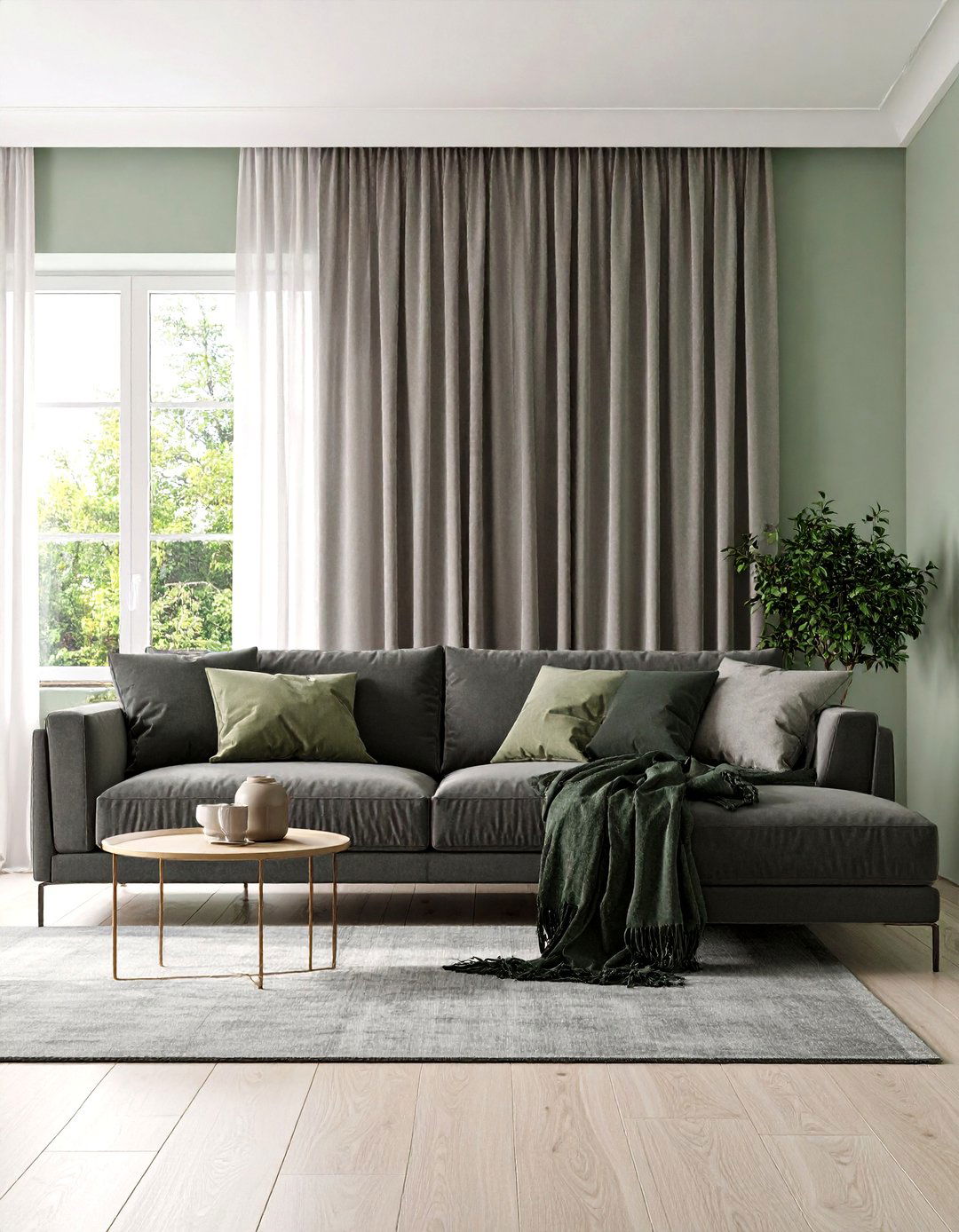
A single soft sage accent wall instantly refreshes a grey and sage green living room without overwhelming its calm vibe. Keep the other three walls a pale dove grey so the accent feels intentional, not patchy, and choose a paint shade two tones deeper than the green accessories you plan to use. Anchor the floor with a medium-tone charcoal sofa, then echo the sage on scatter cushions and a throw to tie both hues together. Because grey absorbs light, the green wall becomes a gentle focal point that flatters artwork and shelves. Finish with sheer grey linen curtains to maintain airy daylight and relaxed flow.
2. Layered Textiles Add Depth and Warmth
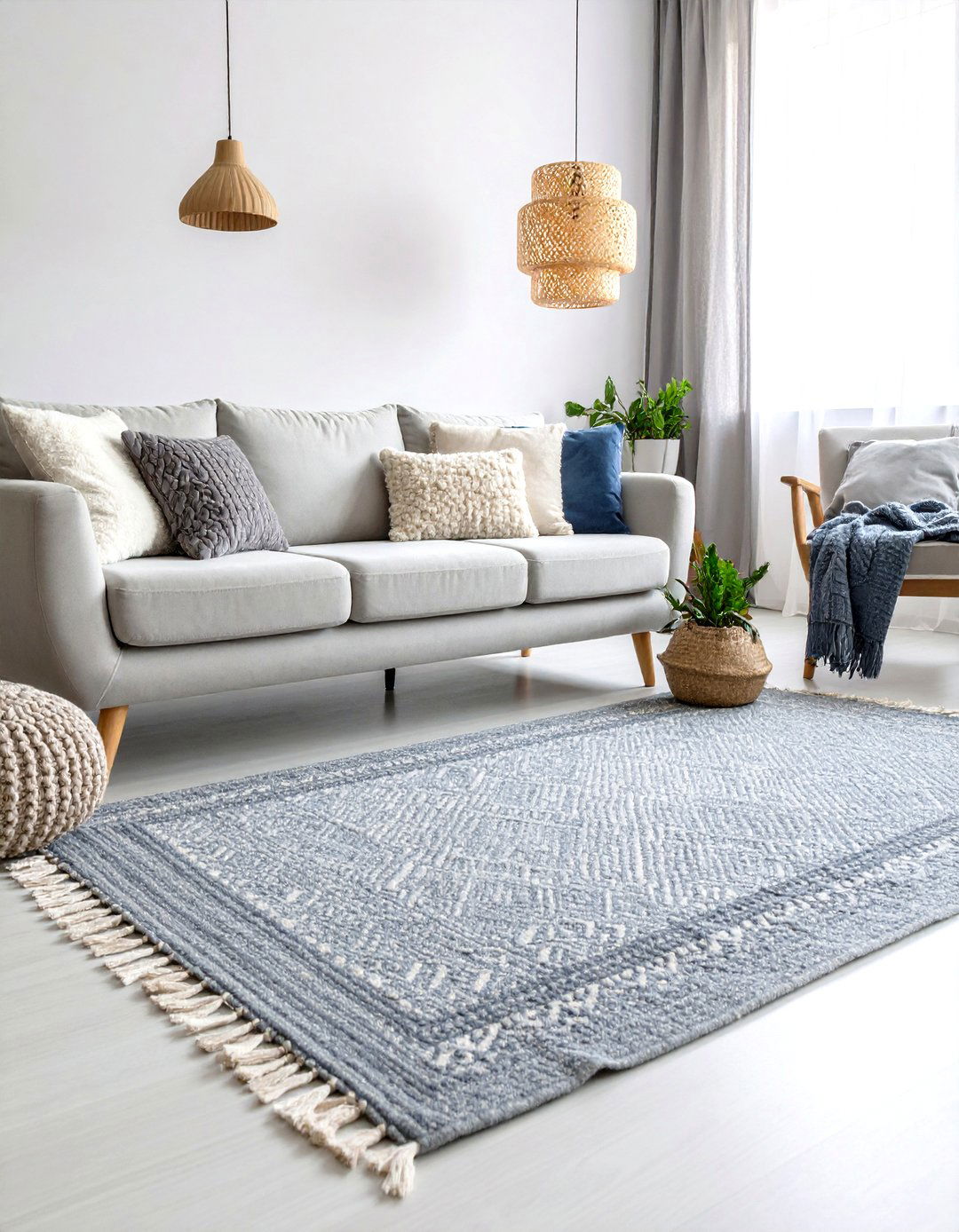
Looking for instant coziness? Layered textiles in complementary greys and sages wrap a living space in comfort while keeping the palette unified. Start with a chunky grey wool rug to ground the seating zone, then drape a sage-green kilim in front of the sofa for pattern and colour. Mix cushions in velvet, bouclé and washed linen—half in sage tints, half in grey tones—to create tactile contrast. Add a knitted sage throw on the reading chair. This approach lets renters or colour-shy decorators build a grey and sage green living room gradually, and every textile can migrate elsewhere when seasons change, making the investment endlessly flexible.
3. Grey Sofa, Sage Green Walls, and Natural Wood Warmth

To bring nature indoors, pair mid-tone sage walls with a classic grey sofa and plenty of warm wood accents. Coffee tables in oak or walnut stop the scheme from feeling chilly, while bamboo blinds diffuse sunlight with a golden glow that flatters both colours. Slip a sage-green ceramic lamp onto a timber side table to bridge the palette. Because a grey and sage green living room already whispers tranquillity, the organic grain of wood introduces energy without shouting for attention. This mix suits Scandinavian, farmhouse and Japandi styles, and nearly every wood stain—from honey to deep chocolate—harmonises effortlessly.
4. Minimalist Palette with Bold Black Touches
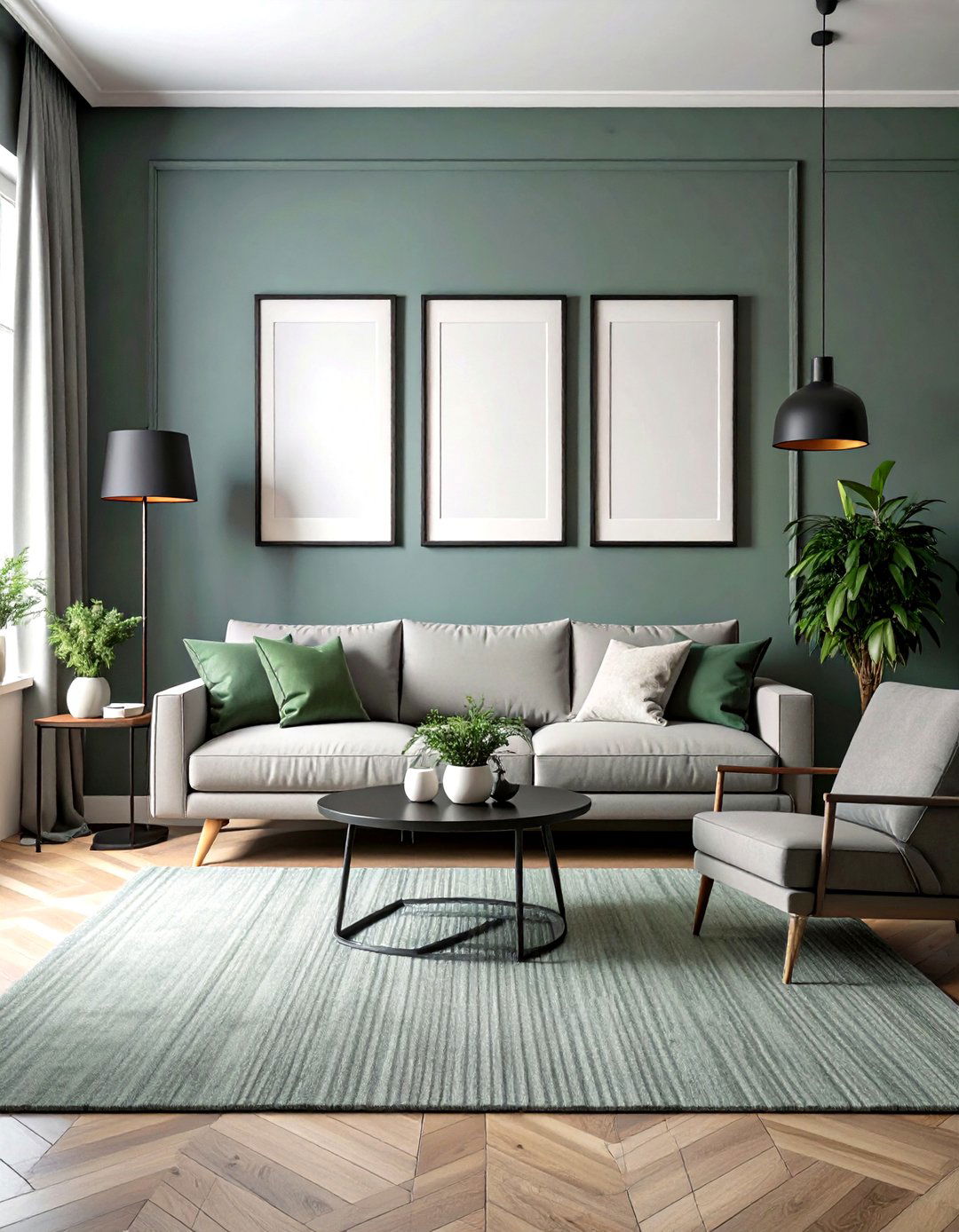
By stripping ornament back to essentials, a minimalist grey and sage green living room can still feel rich when punctuated by strategic black accents. Paint walls a misty grey, then choose a sage area rug large enough to sit fully beneath the seating group. Bring in matte-black picture frames, a slim floor lamp and industrial side tables so the softer hues appear even lighter by contrast. The key is restraint: allow negative space around each object so colour can breathe. Because this look relies on editing rather than purchasing, it’s budget-friendly yet reads as gallery-level intentional.
5. Sage Green Paneling Highlights Light Grey Walls
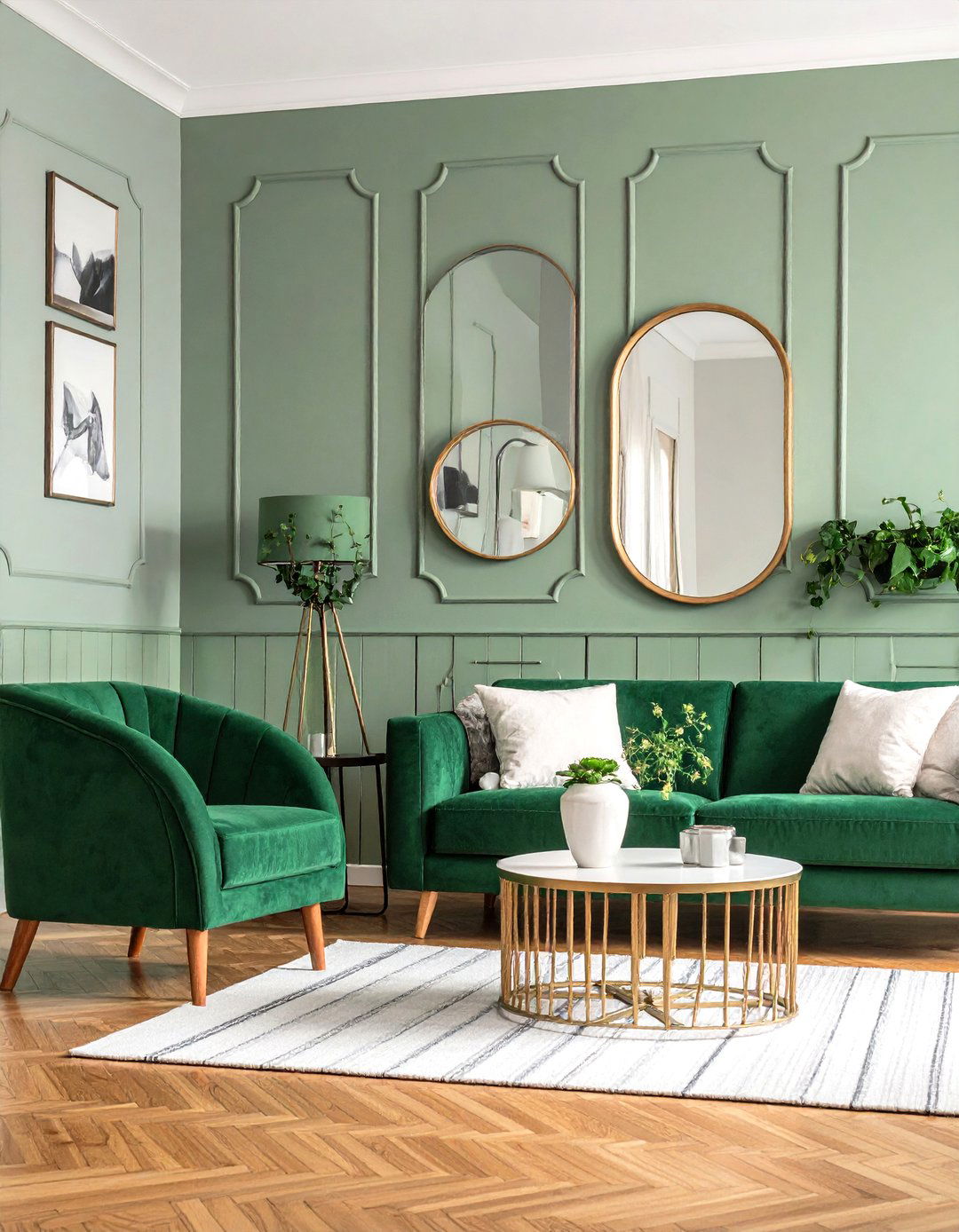
Consider adding half-height tongue-and-groove panelling in sage to give architectural character to otherwise plain light grey walls. The textured boards catch soft shadows, amplifying depth while preserving the calm DNA of a grey and sage green living room. Paint the cap rail in matching green for seamless flow, and leave the upper wall a whisper-pale grey so art and mirrors stand out crisply. Because panelling protects high-traffic areas from scuffs, this idea is practical for homes with kids or pets. An added bonus: you can switch the upper paint in future without touching the trim, refreshing the space in hours.
6. Botanical Inspiration with Real and Faux Plants

Another way to weave nature literally into a grey and sage green living room is through lush foliage. Start with an oversized fiddle-leaf fig in a charcoal concrete planter beside the sofa. Layer smaller pots of sage-toned succulents on floating grey shelves against the wall, echoing the palette through both colour and form. Faux eucalyptus wreaths or preserved-moss art fill darker corners that lack sunlight. When greenery echoes the room’s colours, the design feels intentional, not accidental. Spritz leaves, dust regularly, and replace any struggling specimens promptly to maintain the crisp, spa-like atmosphere that this colour pairing encourages.
7. Metallic Highlights for Subtle Glamour
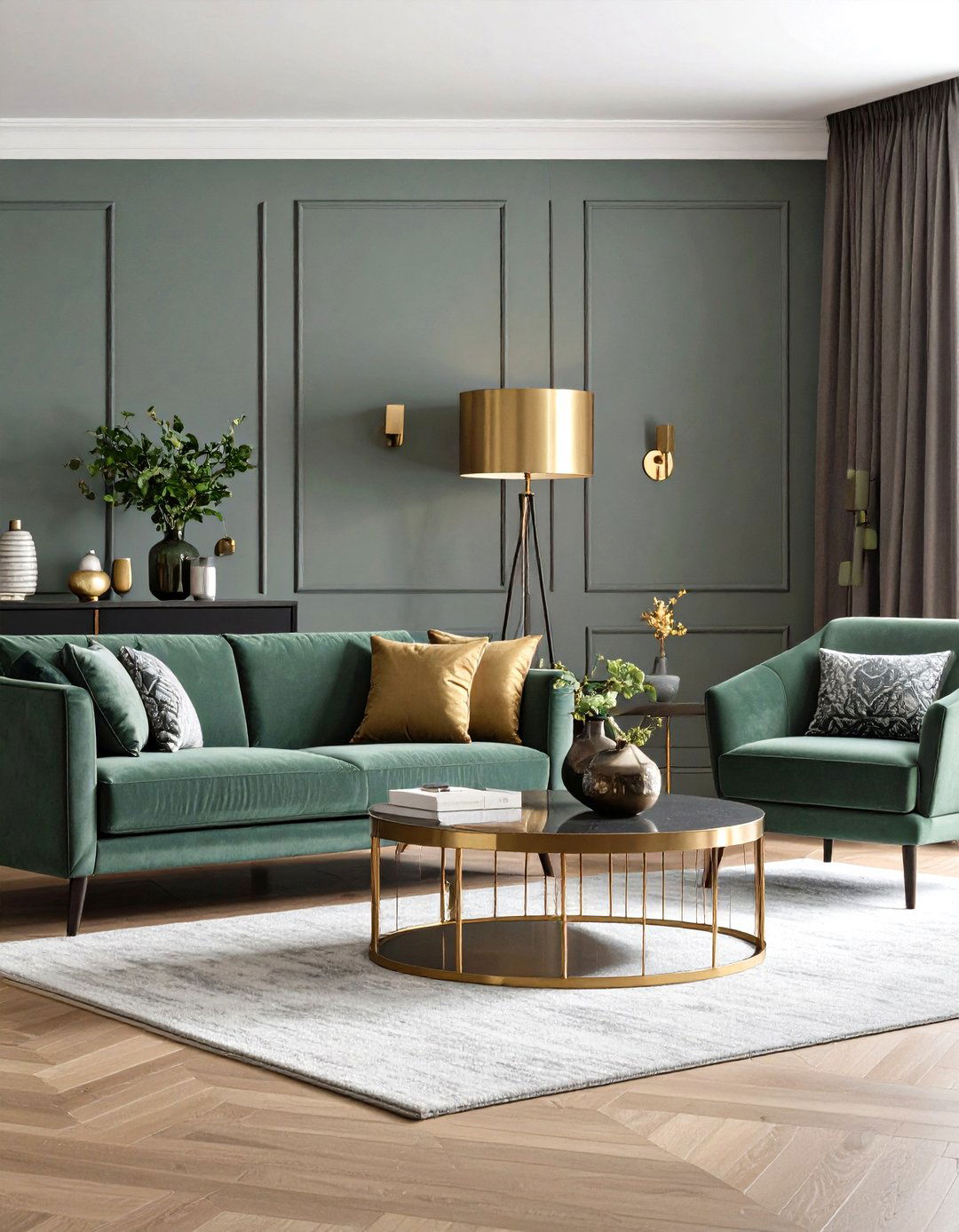
Unlike louder green schemes that demand polished brass, a grey and sage green living room responds best to brushed metals that whisper rather than shout. Swap standard cabinet knobs for satin-nickel or antique-brass versions that pick up the warmth of sage without clashing with cool grey. Add a low bronze coffee table; its patina will glow softly against a sage area rug. A linear wall sconce in aged gold can frame artwork without stealing the spotlight. These small metallic notes bounce light around the room, enlivening muted colours while preserving the restful, grounded mood that makes this palette so appealing.
8. Mid-Century Flair with Sage Rug Under Grey Seating
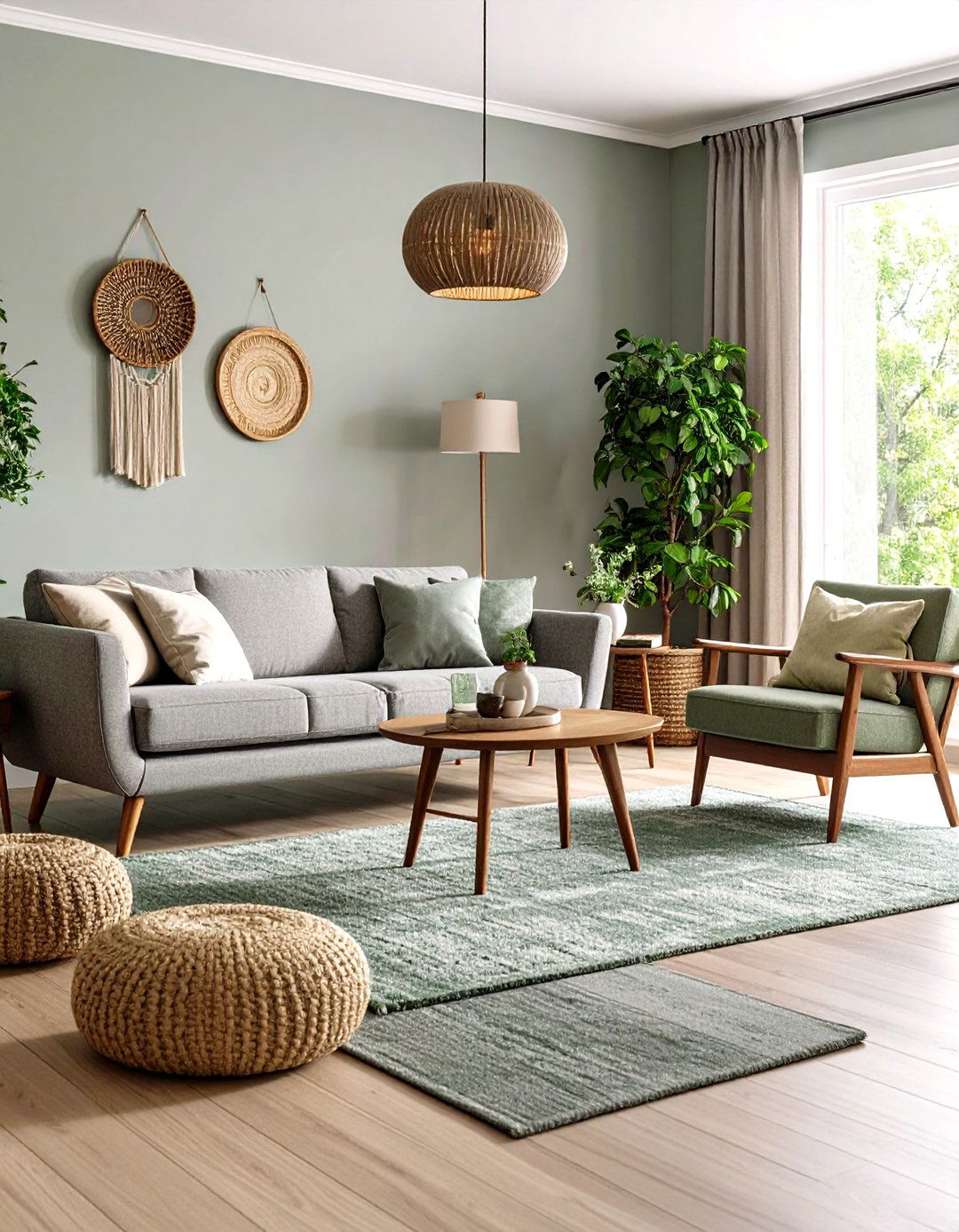
Mid-century silhouettes—think tapered legs and low profiles—look surprisingly fresh when dressed in the grey and sage green living room palette. Place a broad sage rug with simple geometric weave under a grey tweed sofa and matching armchair. Introduce vintage teak or walnut pieces for warmth, topped with a jade-green glass lamp to echo the floor colour. Abstract art featuring charcoal lines keeps the scheme crisp. Because mid-century furniture sits low, the rug’s sage tone becomes a broad swath of colour that unites the setting. The result feels collected over time yet coordinated, perfect for thrift-store treasure hunters.
9. Grey Fireplace Flanked by Sage Built-Ins
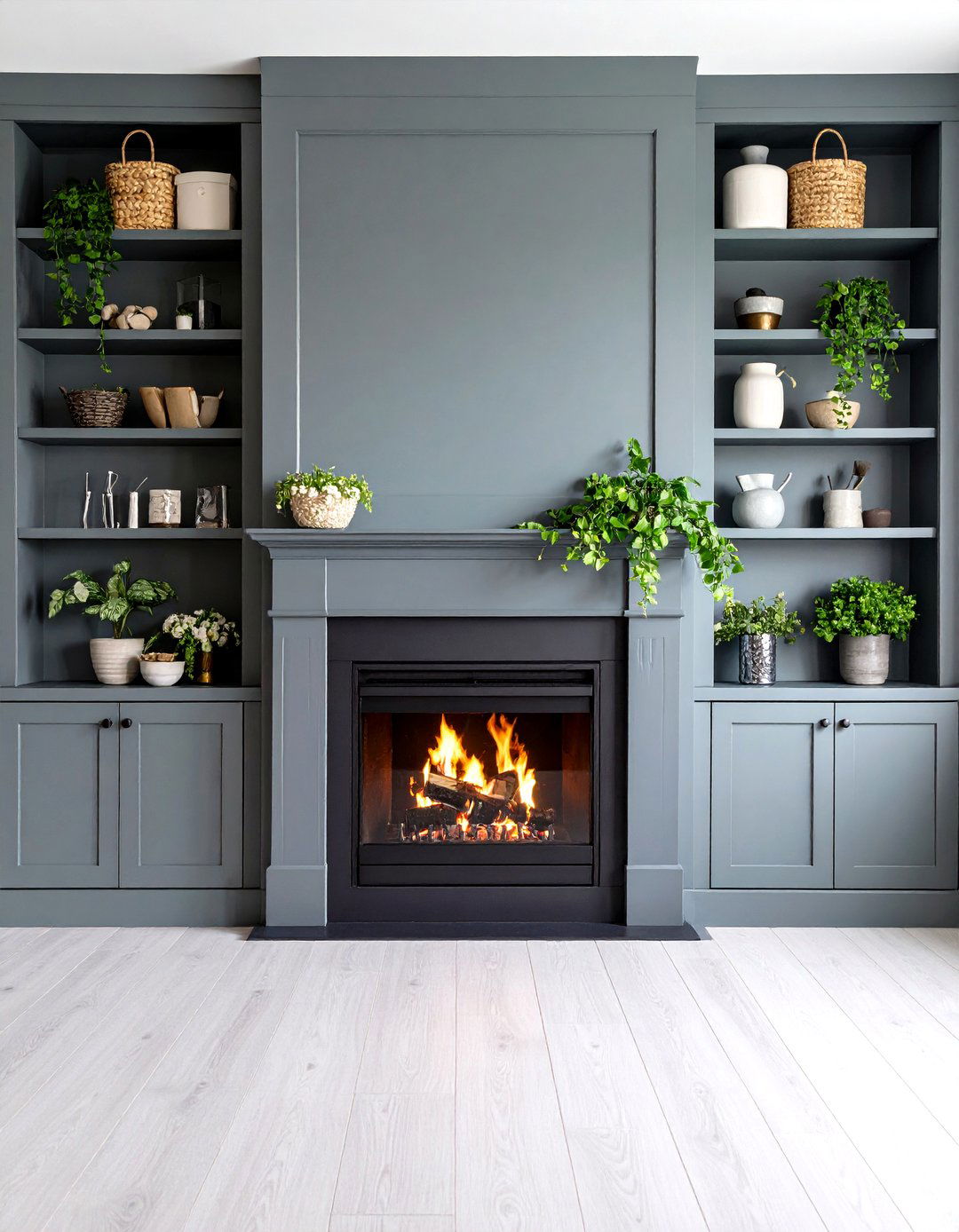
A fireplace instantly commands attention, so frame it with custom sage-green built-ins. Paint the mantel or surround a sophisticated slate grey to anchor the arrangement, then let bookcases on either side wear a soft green. Display neutral pottery, woven baskets and trailing plants on the shelves to reinforce the palette. The contrast draws eyes toward the hearth while allowing storage to recede visually. This strategy is especially smart in compact homes where every centimetre must work hard: you gain hidden cabinetry for games and media gear while creating a magazine-worthy focal point in the grey and sage green living room.
10. Artisan Textiles Bring Soul to the Scheme
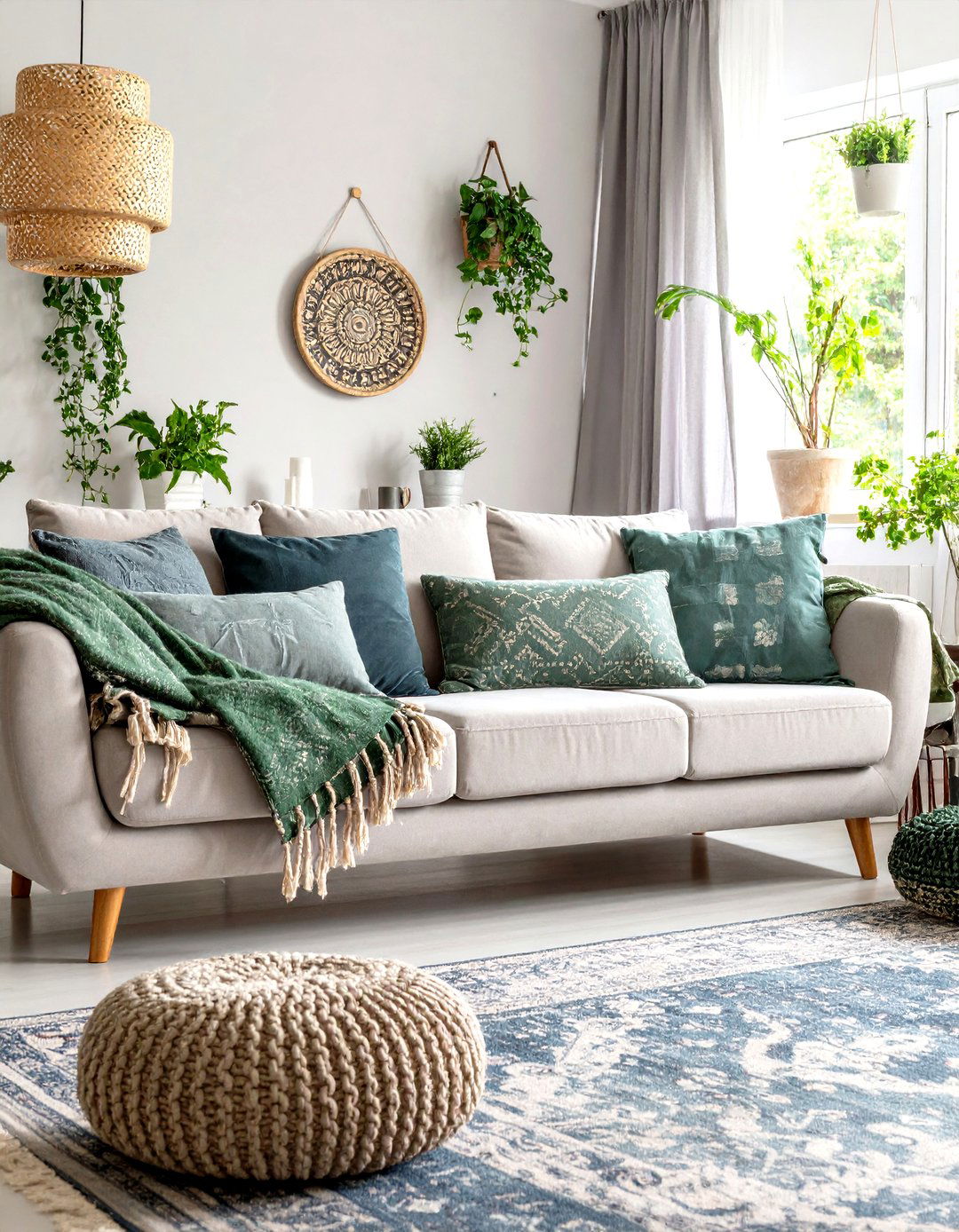
Surprisingly, the most memorable grey and sage green living rooms often rely less on paint and more on handcrafted textiles. Hunt for a block-printed linen lumbar pillow mixing the two colours, a hand-knotted sage throw with subtle grey flecks or a vintage kilim full of desaturated greens and smoky greys. These one-of-a-kind pieces inject story and gentle variation, preventing the palette from feeling flat. Because they are portable, you can layer them seasonally—heavier wool in winter, airy cotton in summer—without repainting anything. Treat each textile like art: spotlight it with focused lighting and keep neighbouring surfaces understated for maximum impact.
11. Unexpected Twist: Sage Ceiling Over Grey Walls
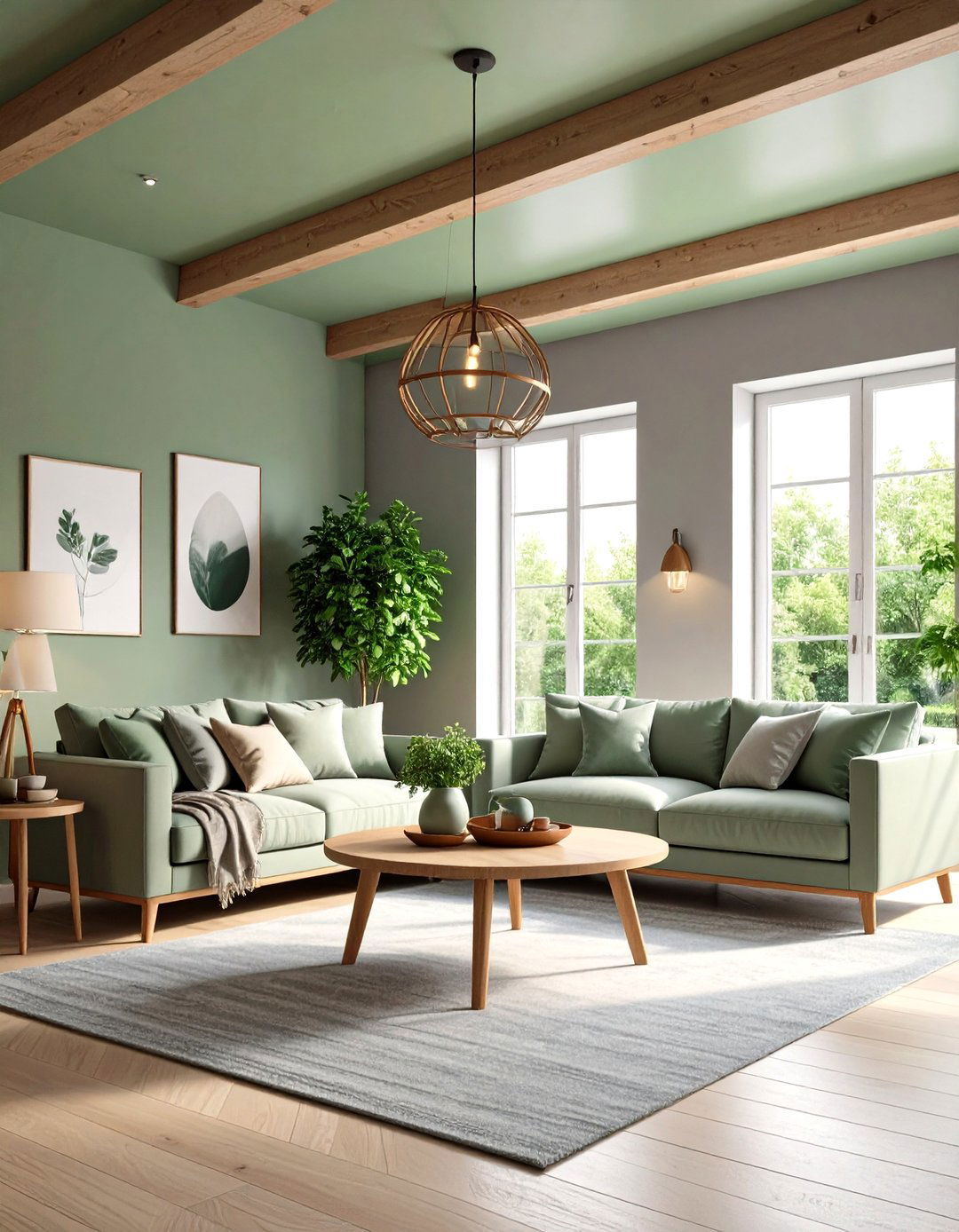
Certainly, painting the ceiling sage green while leaving the walls grey flips conventional rules and creates a cocooning effect reminiscent of a leafy canopy. Choose a light-reflective, low-sheen paint so the ceiling colour glows rather than looms. Echo that shade on a single accessory—perhaps a ceramic vase on the coffee table—to reinforce the dialogue. The grey walls act as thematic continuity, meaning existing furniture needn’t change. This trick works best in rooms with generous daylight or uplighters that graze the ceiling at night, ensuring the green reads serene, not heavy. Visitors will sense the shift instantly, often asking what’s different.
12. Zoning an Open-Plan Space with Rugs
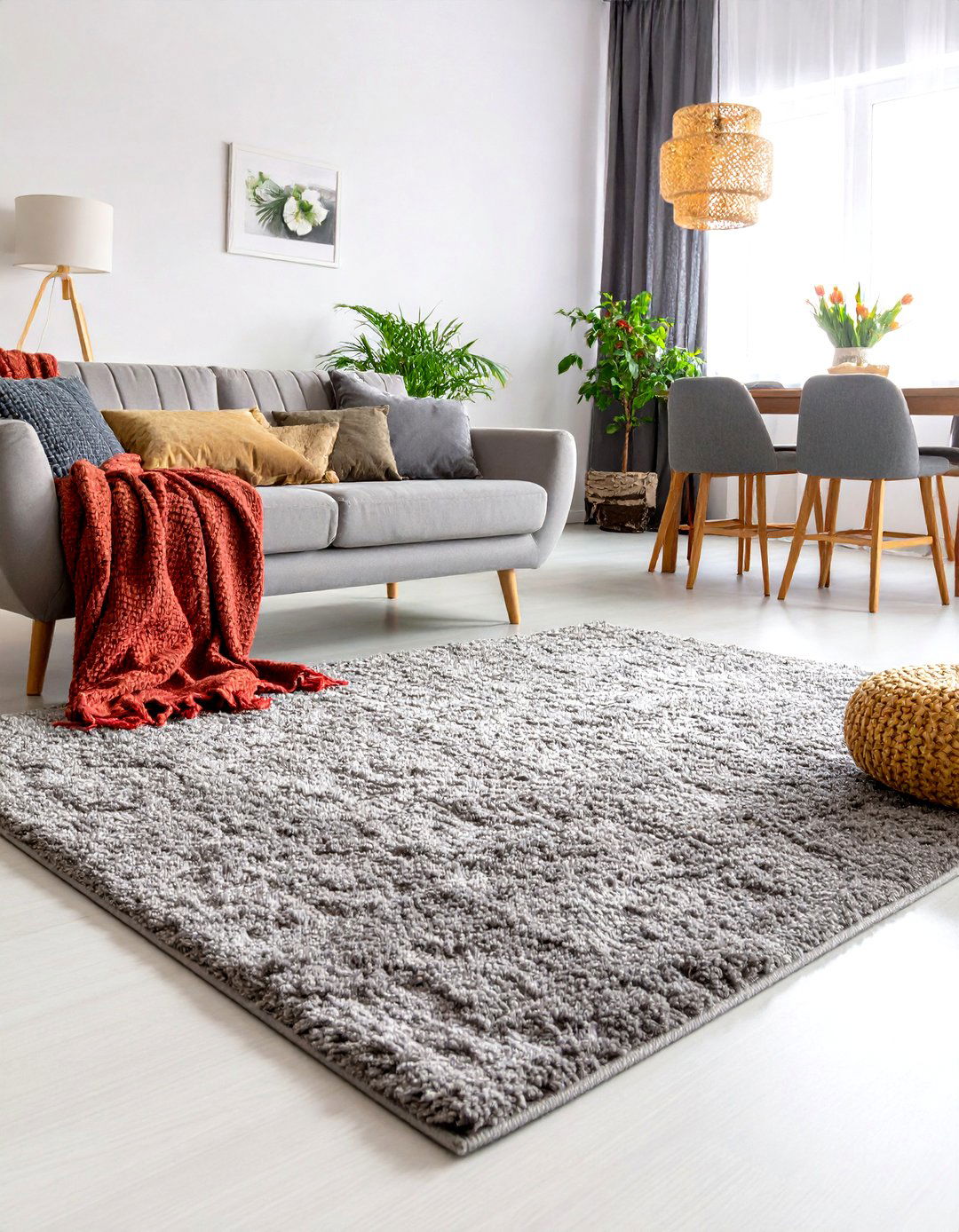
Open-plan homes can still enjoy a cohesive grey and sage green living room by using rugs to mark activity zones. Place a large grey wool rug under the sofa and coffee table to define conversation space. Then layer a slimmer sage runner behind the sofa where it meets the dining area, visually separating functions without walls. Repeat sage on bar-stool cushions or pendant cords to reinforce the transition. Keeping ceilings and large furniture neutral grey allows sightlines to stay calm—crucial in multi-use layouts. This rug-based zoning also muffles sound, so lively dinner chatter won’t echo into the TV corner.
13. Velvet Grey Sofa with Sage Throws for Luxurious Comfort
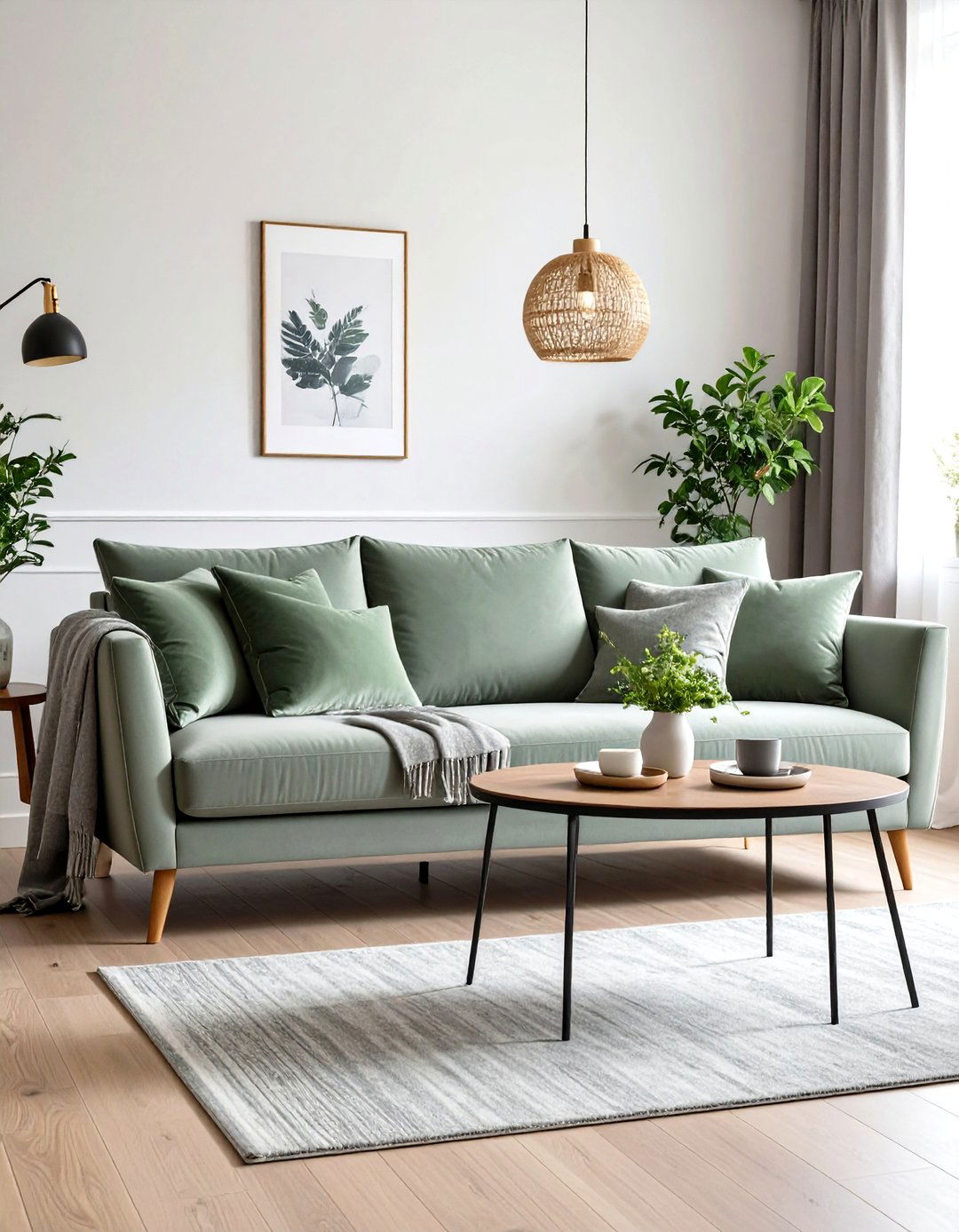
Few textures whisper luxury like velvet. Invest in a deep-seated grey velvet sofa, then style it with oversized sage chenille cushions and a fine-gauge cashmere throw for tactile richness. The slight sheen of velvet amplifies ambient light, making the surrounding sage walls glow softly by contrast. For balance, ground the arrangement with a matte black metal coffee table and low-pile rug, ensuring the room feels sophisticated rather than fussy. Because every element stays within the grey and sage green living room palette, you can introduce seasonal accent colours—burnt orange in autumn, blush pink in spring—without disrupting your luxurious foundation.
14. Texture Play with Bouclé and Linen
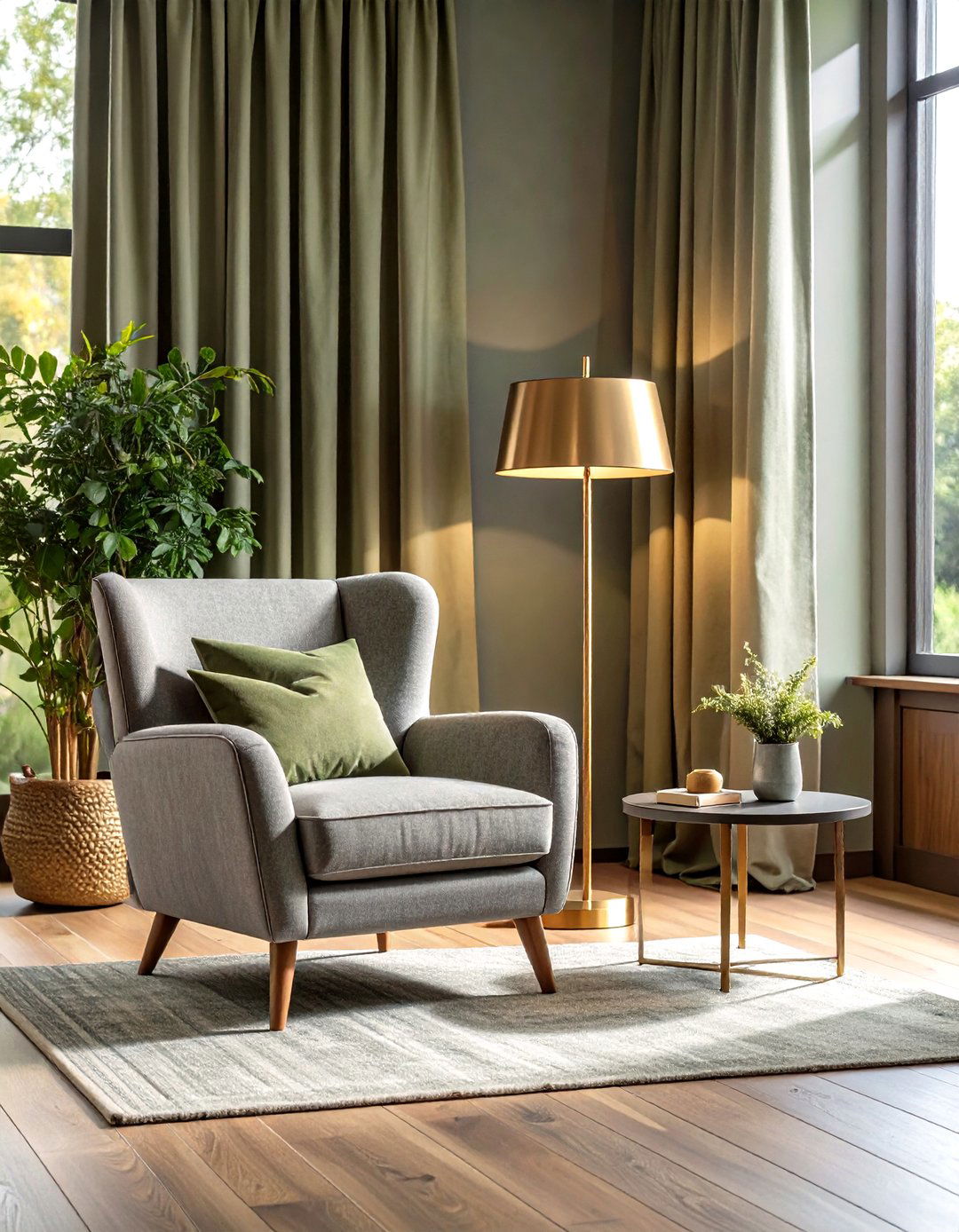
Unlike colour alone, texture instantly elevates a grey and sage green living room from pleasant to unforgettable. Begin with a cloud-soft bouclé grey armchair, then pair it with floor-length sage linen drapes that ripple gently in the breeze. Add a slate-topped side table for cool contrast, finishing with a softly brushed brass floor lamp for warmth. This ensemble encourages touch and conversation about tactile experiences. Cleaning is simple: most bouclé and linen blends are stain-guarded, and loose-weave curtains can be machine-washed on delicate. In compact apartments, layering textures like these brings depth without crowding the eye with extra furniture.
15. Scandinavian-Inspired Minimal Grey and Sage Hub
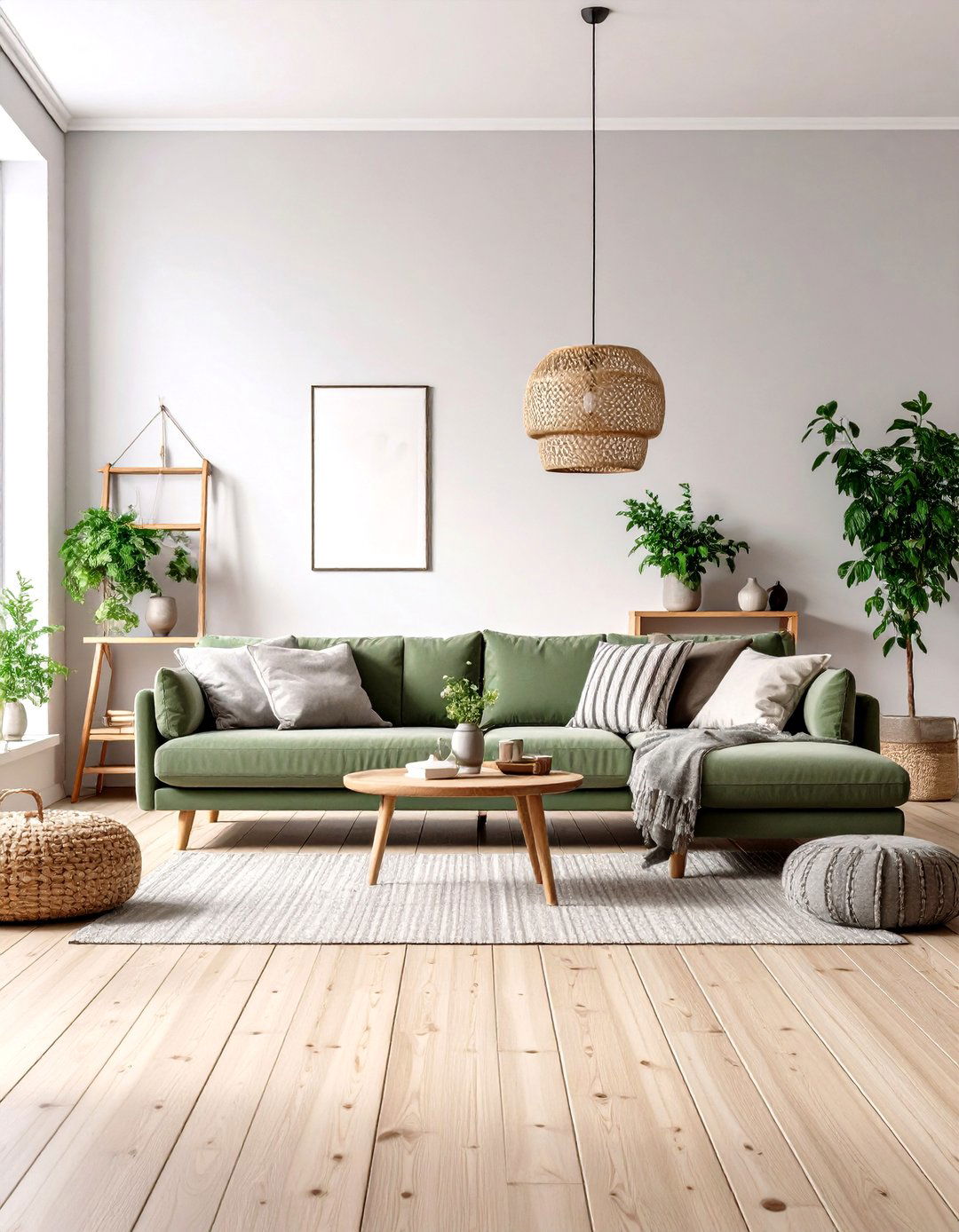
Although Scandinavian style is famous for whites, replacing stark white with misty grey and sage green creates the same lightness with more personality. Cover floors in bleached wood or faux-oak vinyl, then bring in a sage sofa with clean lines and tapered legs. Keep walls a light stone grey, and use slim birch shelving to display pottery in matching hues. Add just one graphic black-and-white print for edge. Because Scandinavian interiors prize functionality, choose storage ottomans upholstered in sage felt to hide clutter. The result is a grey and sage green living room that feels airy yet grounded—a perfect haven for hygge evenings.
16. Terracotta Accents for Earthy Contrast
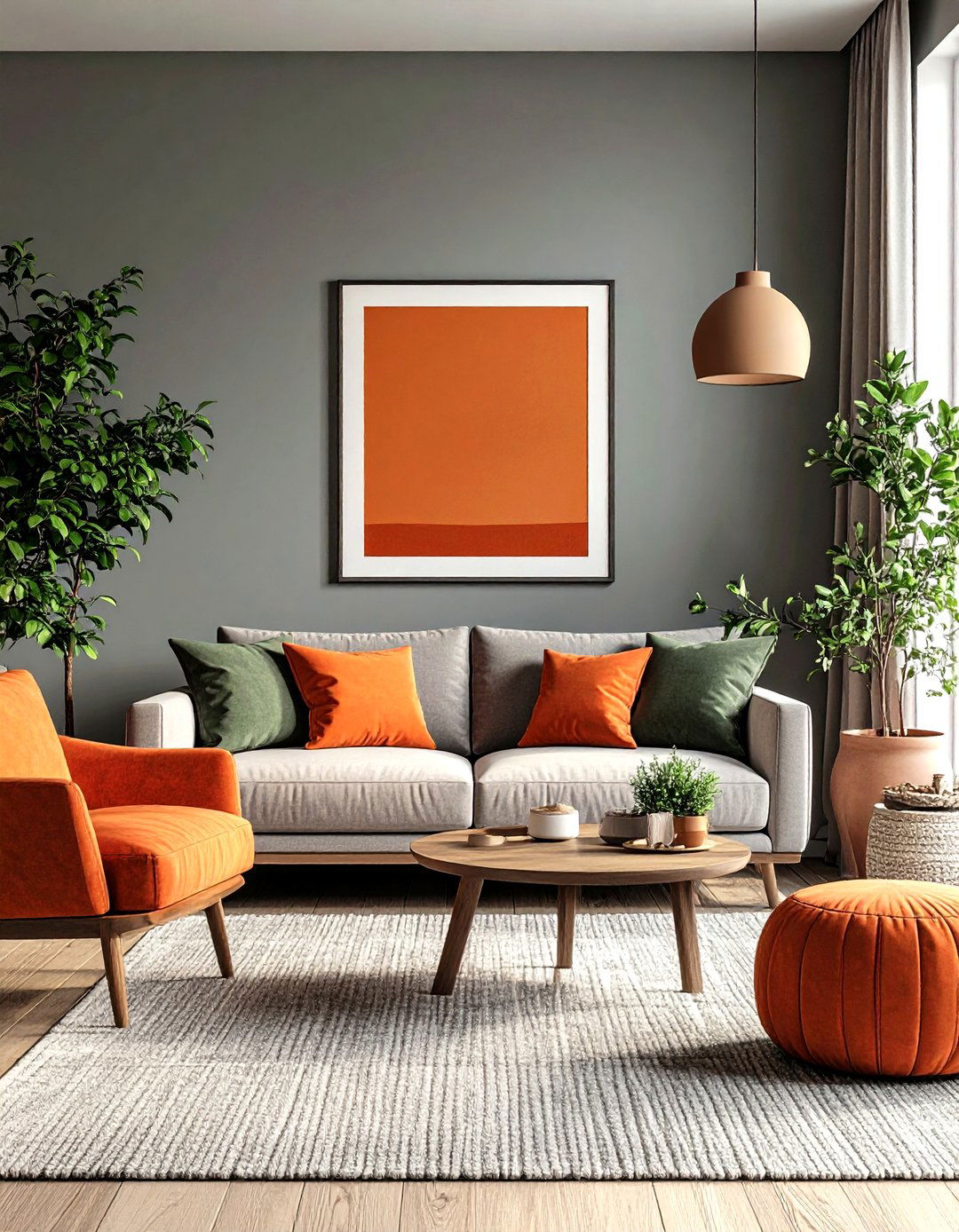
Despite their cool undertones, grey and sage green benefit enormously from a small dose of warm terracotta, creating an earthy triad. Pop a pair of terracotta planters beside the TV unit, or hang a framed print featuring clay-orange brushstrokes above the sofa. The warm pigment intensifies the freshness of sage and the calm of grey, ensuring the palette never feels flat. Stick to a 10-percent rule: let terracotta account for roughly a tenth of visible colour, so it acts as a spice rather than a main ingredient. This subtle warmth keeps the grey and sage green living room relatable and welcoming year-round.
17. Reverse Scheme: Pale Sage Sofa with Dark Grey Walls
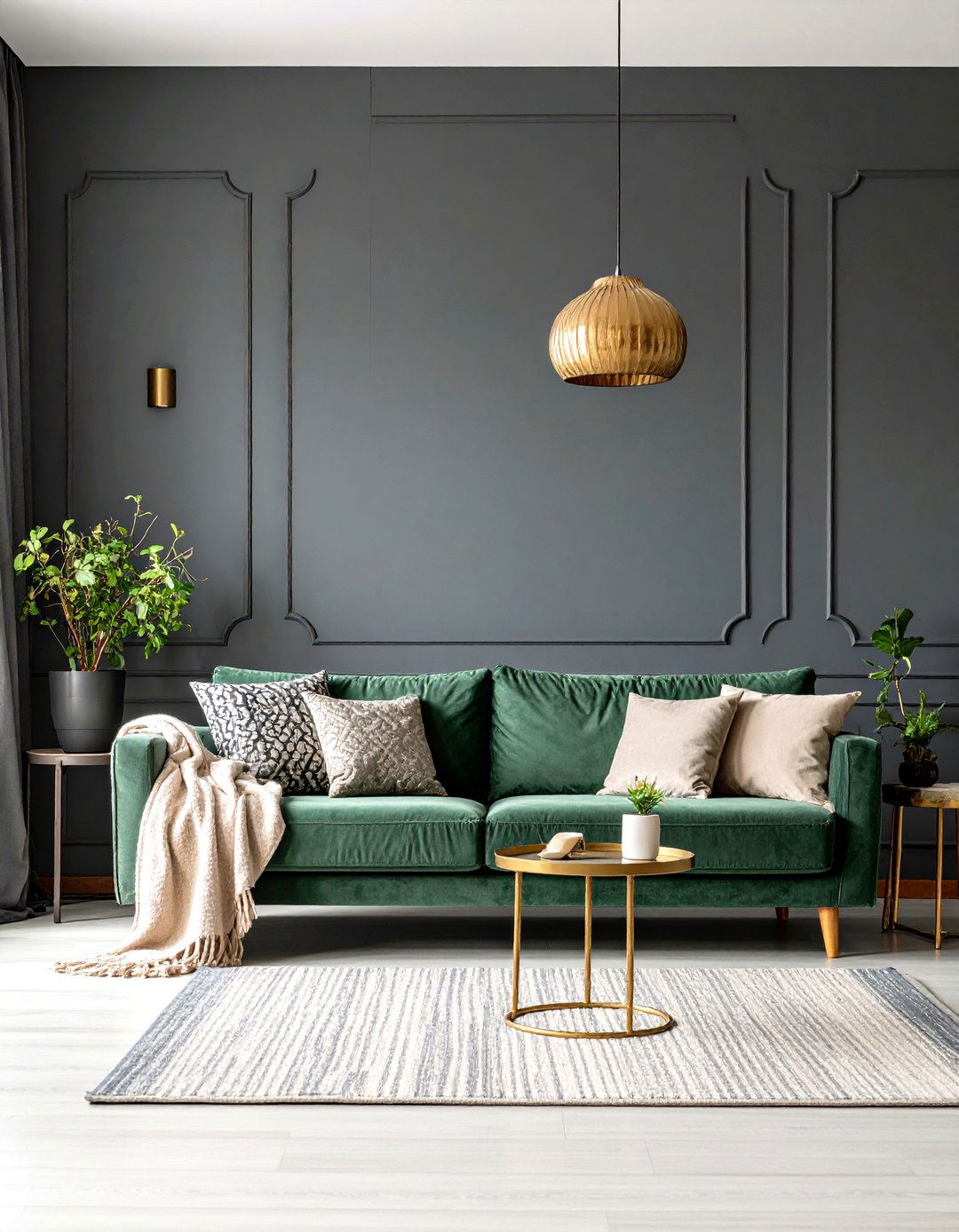
Unlike the traditional light-walls-dark-sofa setup, flipping the script by pairing deep charcoal walls with a pale sage sofa produces dramatic intimacy. Choose a rich, almost-black grey in an eggshell finish so it absorbs glare, then select a sofa upholstered in muted sage velvet or a linen blend. Accent with cream throws and brass lighting to prevent the room from feeling cave-like. This reverse approach concentrates colour where people sit, making the seating feel like a soft island inside the moody backdrop. Guests will remember how inviting the grey and sage green living room felt, despite its bold, cinematic aura.
18. Statement Lighting as a Colour Echo
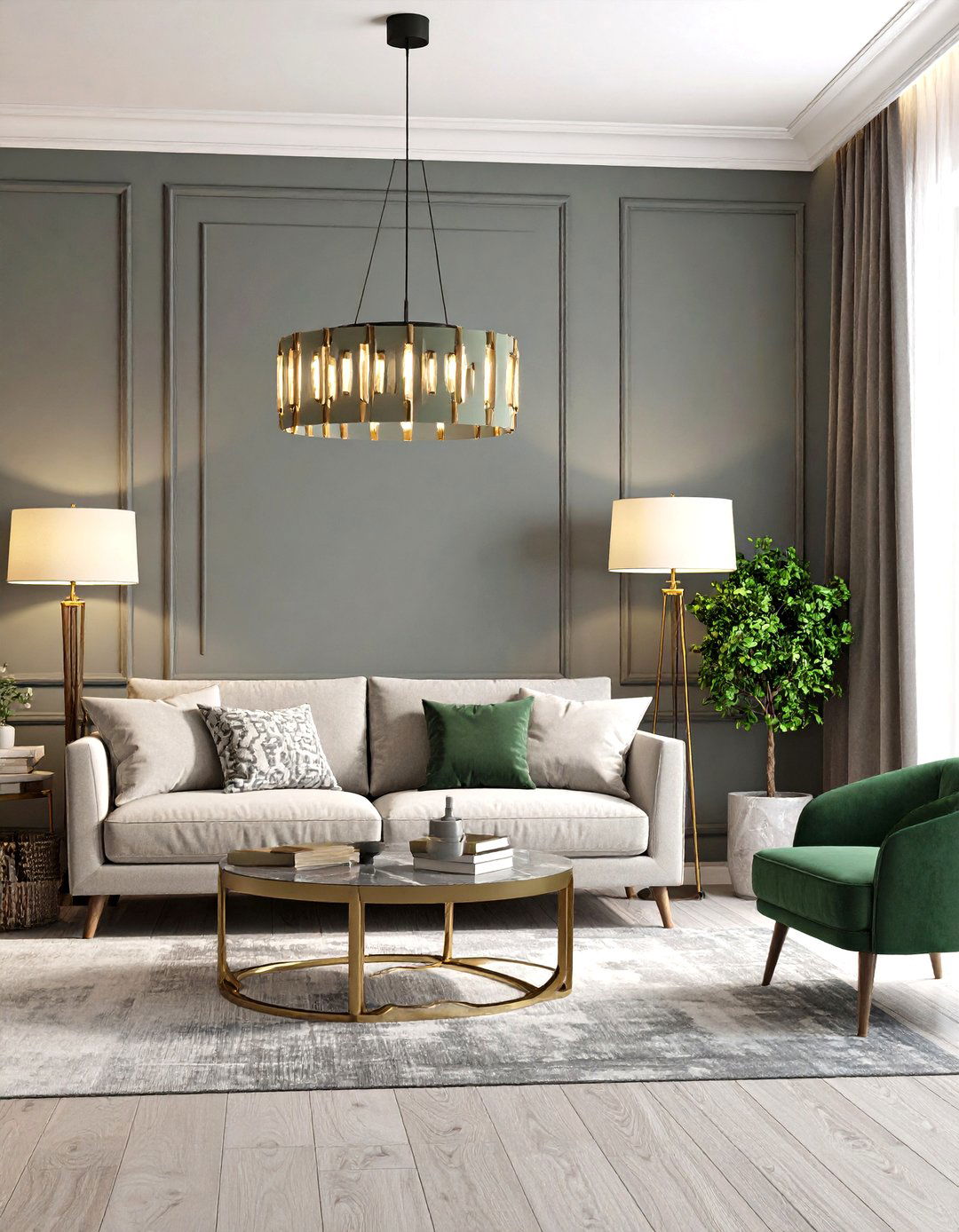
Lighting isn’t just functional—it can reinforce your palette. Opt for a pendant with a sage enamel shade over the coffee table, then pick a grey marble base for a floor lamp in the reading corner. When bulbs glow, the sage reflects softly across nearby walls, harmonising the colour story even at night. Choose dim-to-warm LED bulbs so the room shifts from task brightness to evening ambience with a dial twist. Wiring a pendant often costs less than repainting, yet the visual impact is immense, making it a clever investment for renters hoping to personalise a grey and sage green living room.
19. Built-In Storage Keeps Family Spaces Tidy

Family life brings clutter, but cleverly integrated storage safeguards the tranquillity of a grey and sage green living room. Commission wall-to-wall cabinets in light grey MDF, then paint only the open display niches sage to create depth and showcase favourite objects. Use soft-close hinges so doors shut silently during movie nights, and line drawers with washable sage felt pads to protect remotes and game controllers. Because the palette remains consistent, the eye sees an unbroken surface rather than busy cabinetry, helping small rooms feel larger. Teaching children to tidy becomes easier when every item has a dedicated, colour-coded home.
20. Seasonal Switch-Up with Removable Accents

To keep a grey and sage green living room feeling fresh, treat sage as the seasonally flexible element. In spring, bring out pastel-sage cushions and lightweight cotton throws. During winter, swap them for deeper herbal-sage velvet and chunky knits while leaving the grey foundation untouched. Peel-and-stick sage wallpaper panels make an eye-catching temporary backdrop behind the sofa and peel away cleanly when you crave change. This strategy respects budgets and keeps waste low, letting you respond to colour trends while preserving the timeless grey shell. The result is a living room that always feels current, yet never chaotic.
Conclusion:
Grey and sage green prove that calm doesn’t have to mean bland. Whether through a single accent wall, bold built-ins or layers of artisan textiles, the palette delivers versatility, organic warmth and quiet sophistication that works every season. Pair cool grey foundations with nature-inspired sage touches and you’ll gain a space that invites relaxation while adapting easily to new textures, metallics or accent colours. Use these ideas as building blocks, combine them confidently and let your grey and sage green living room evolve effortlessly alongside your lifestyle.


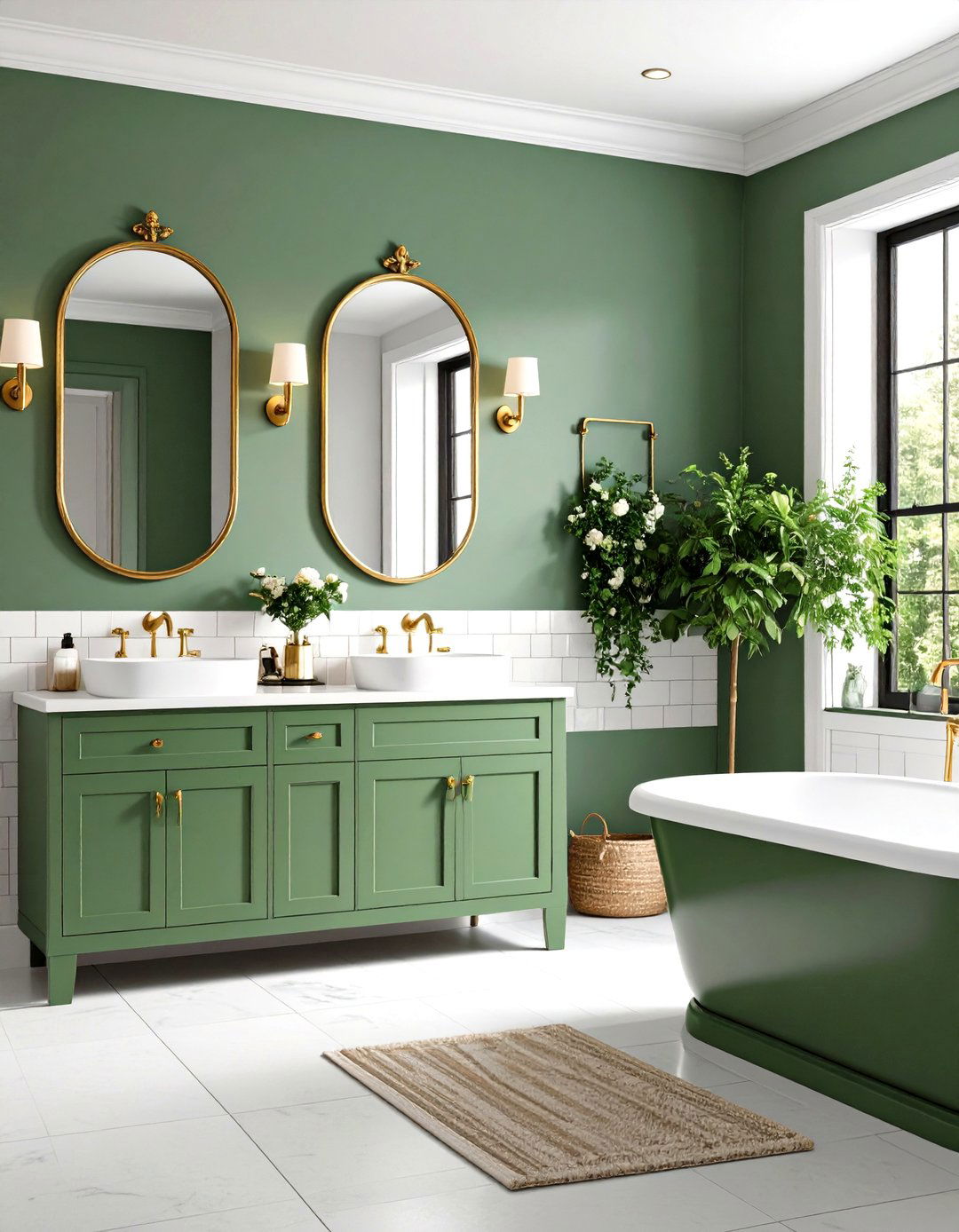
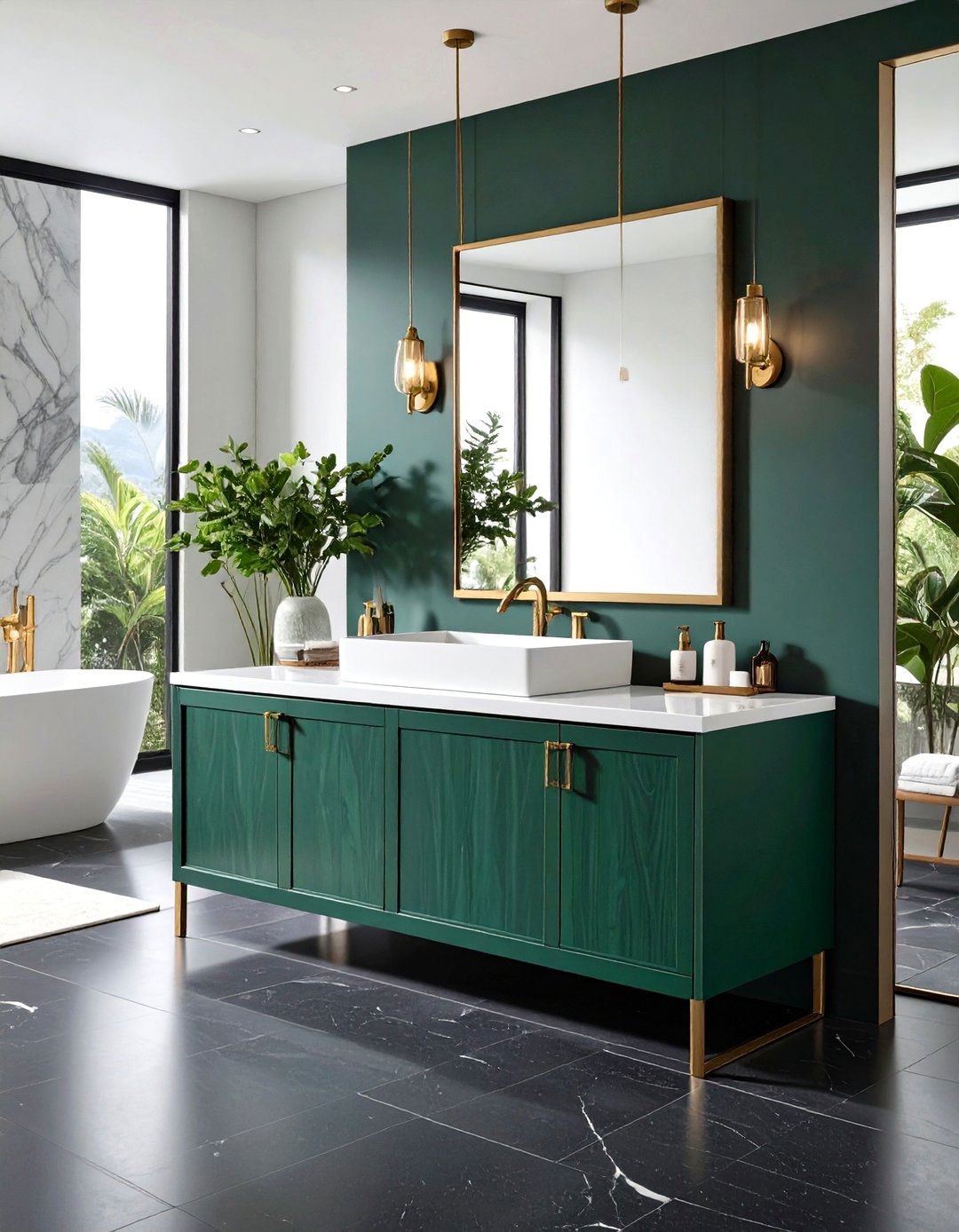
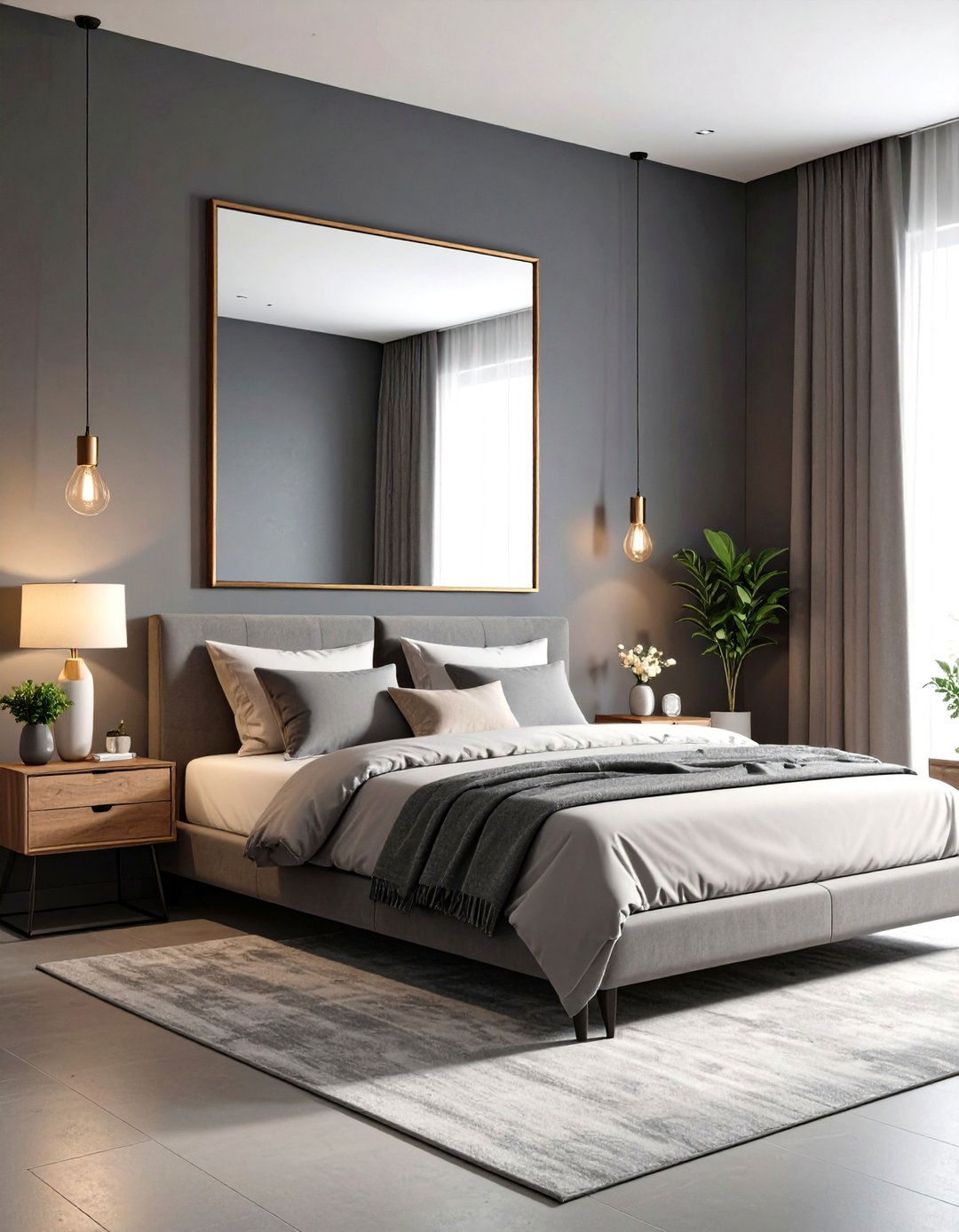
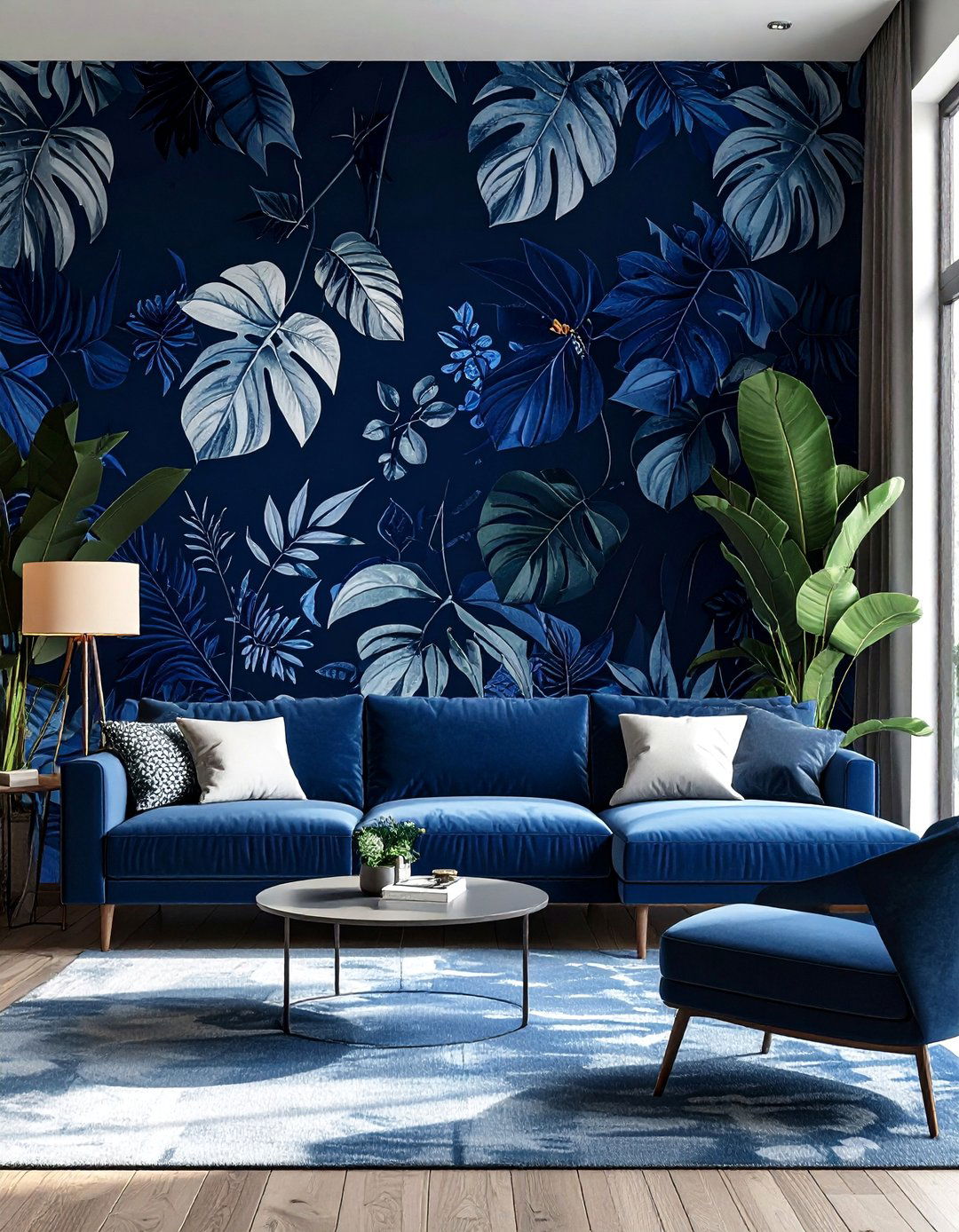
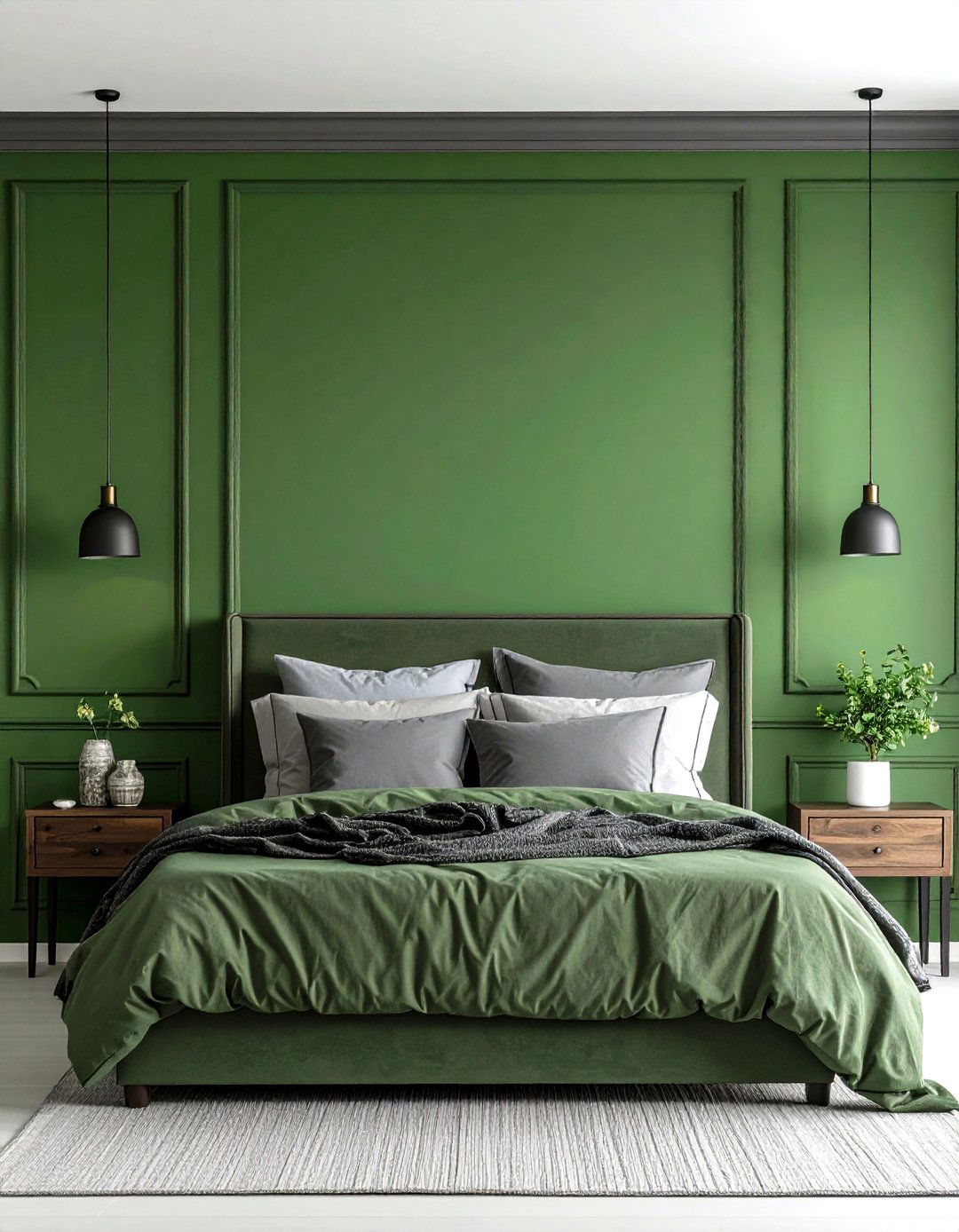
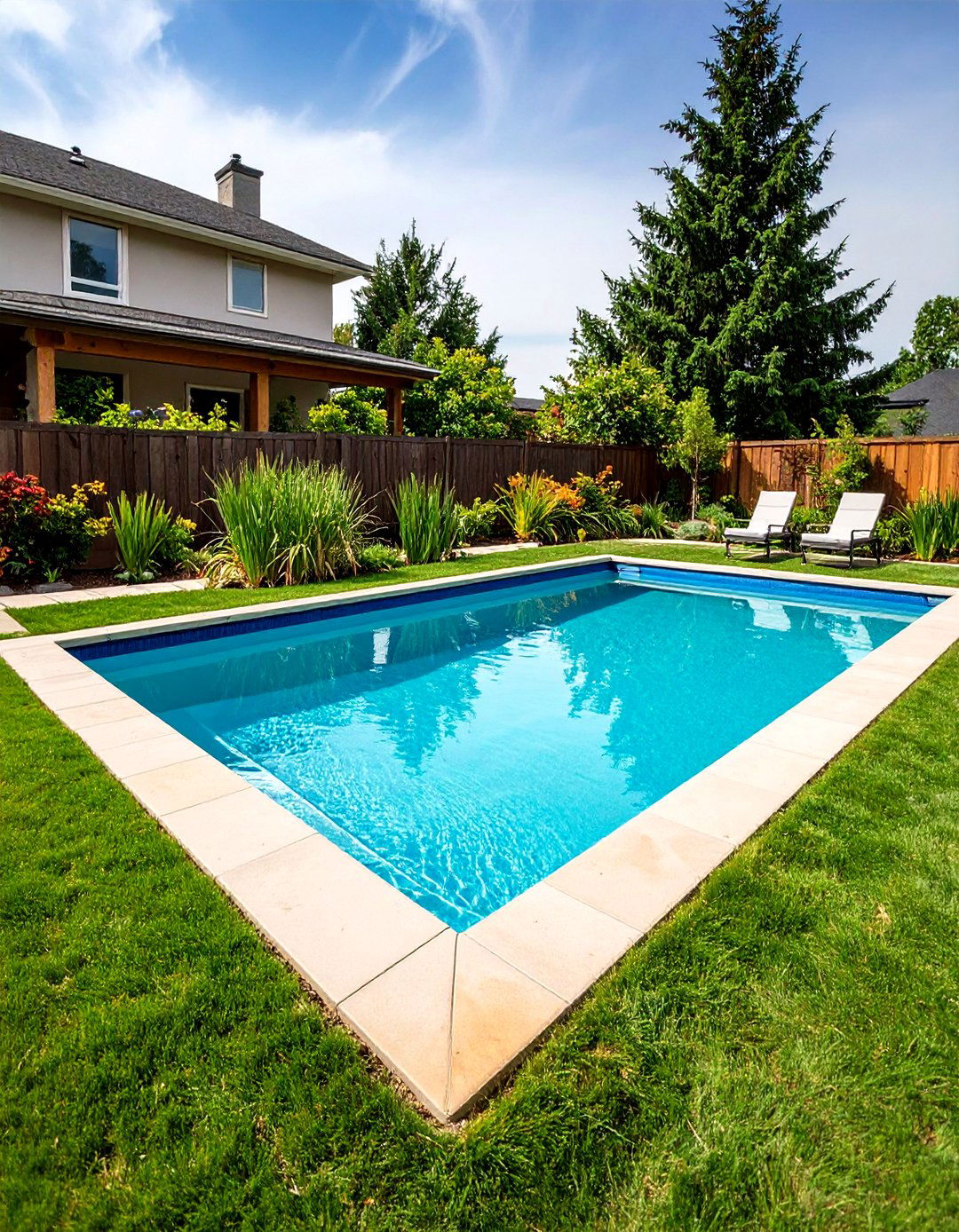
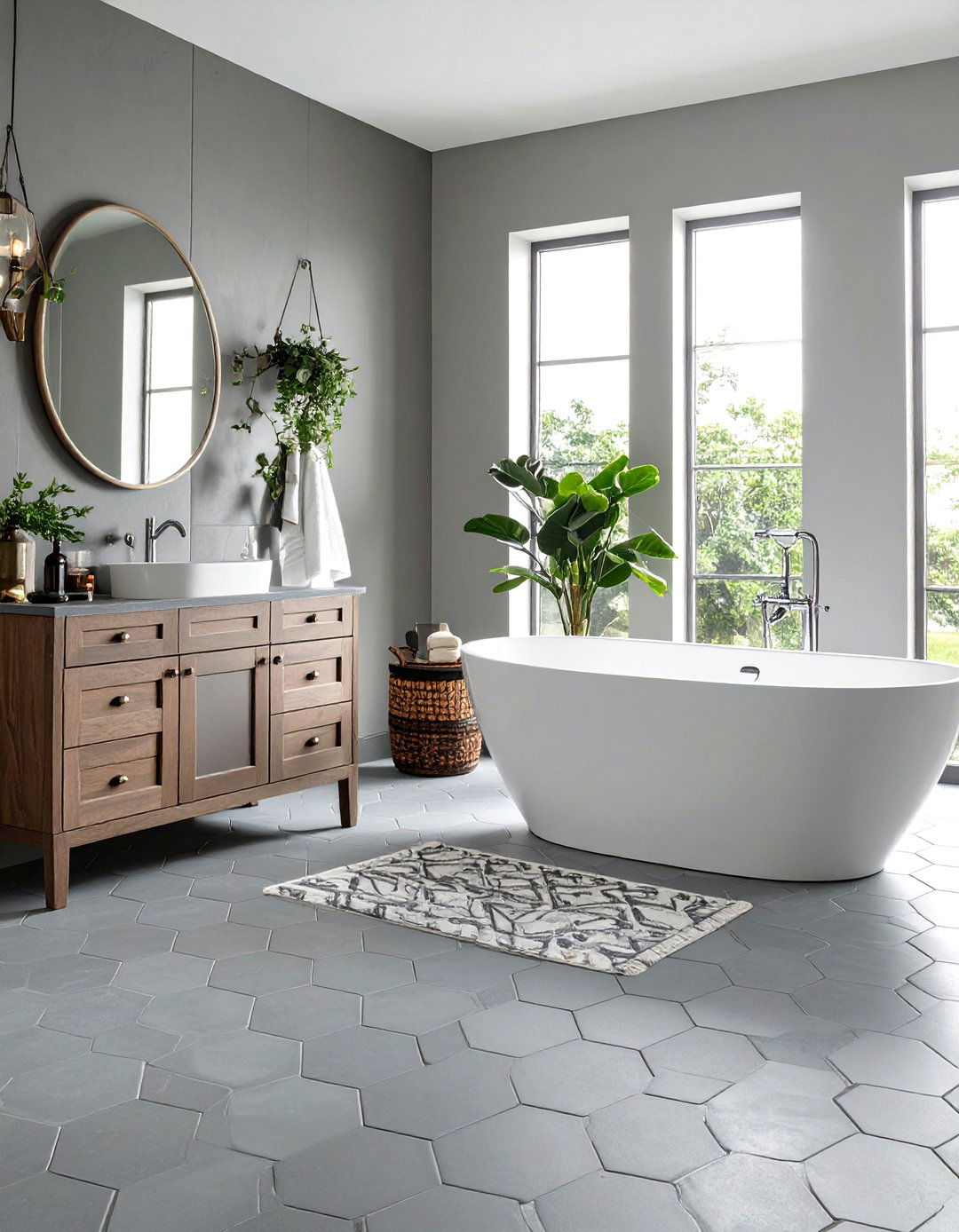
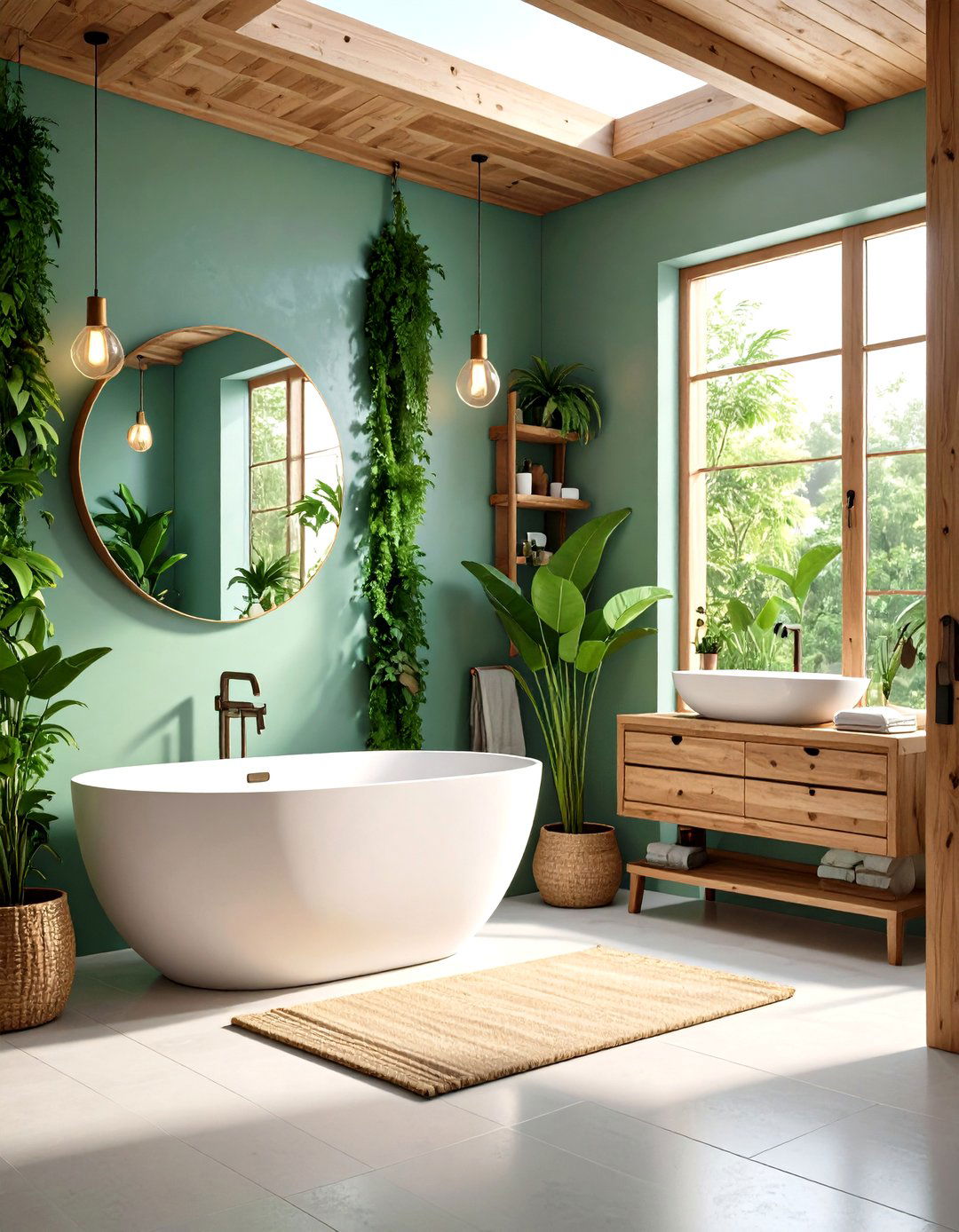
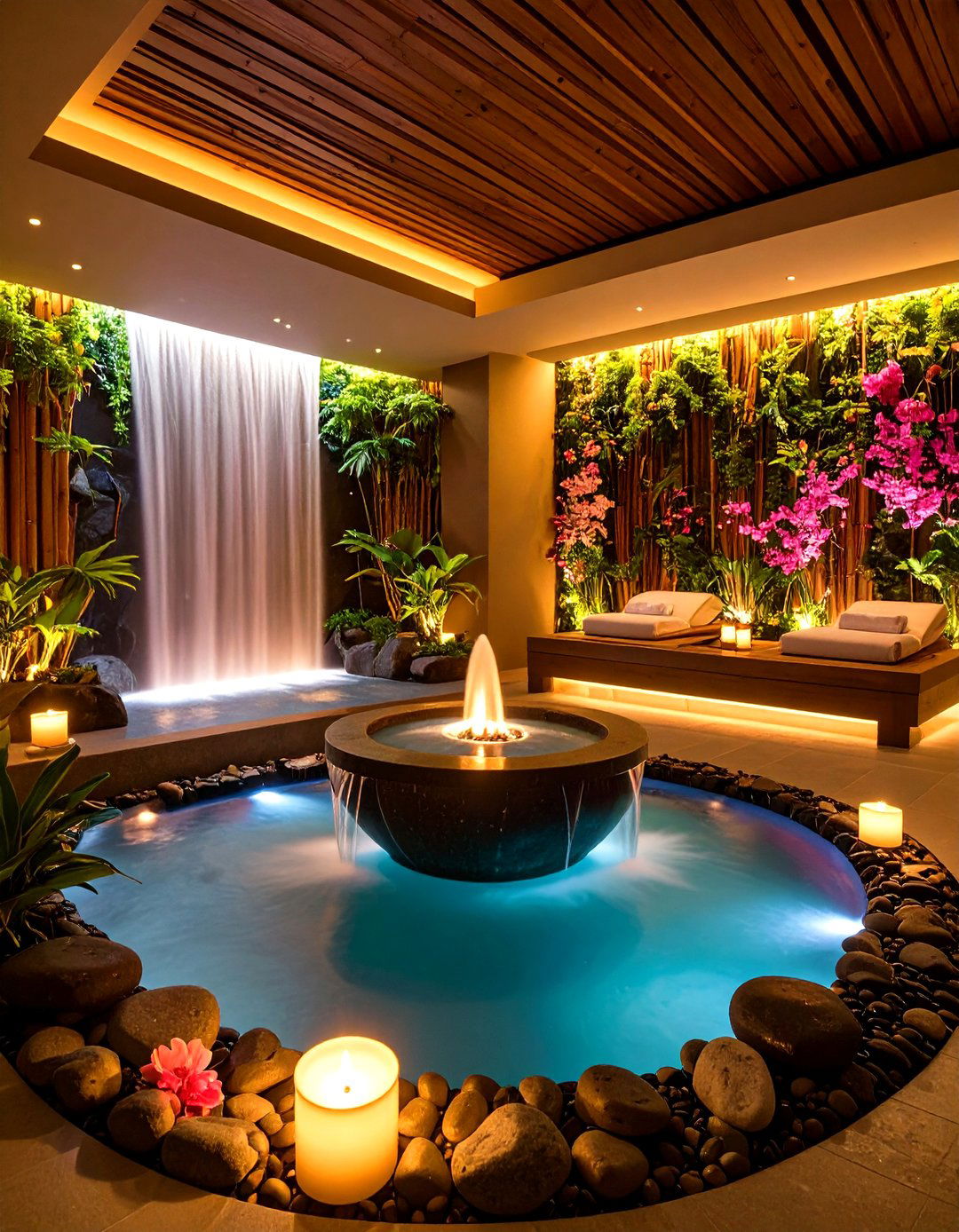
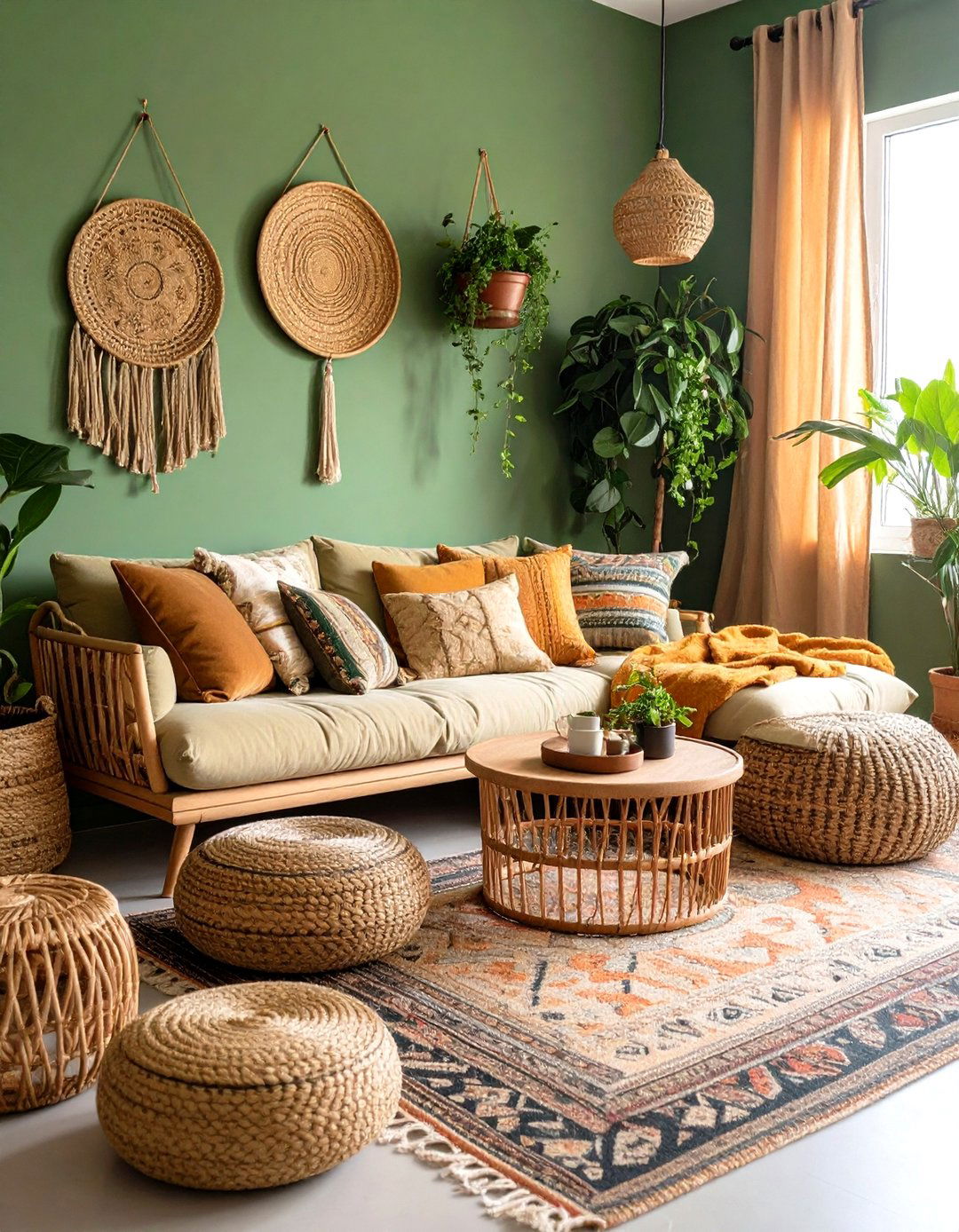

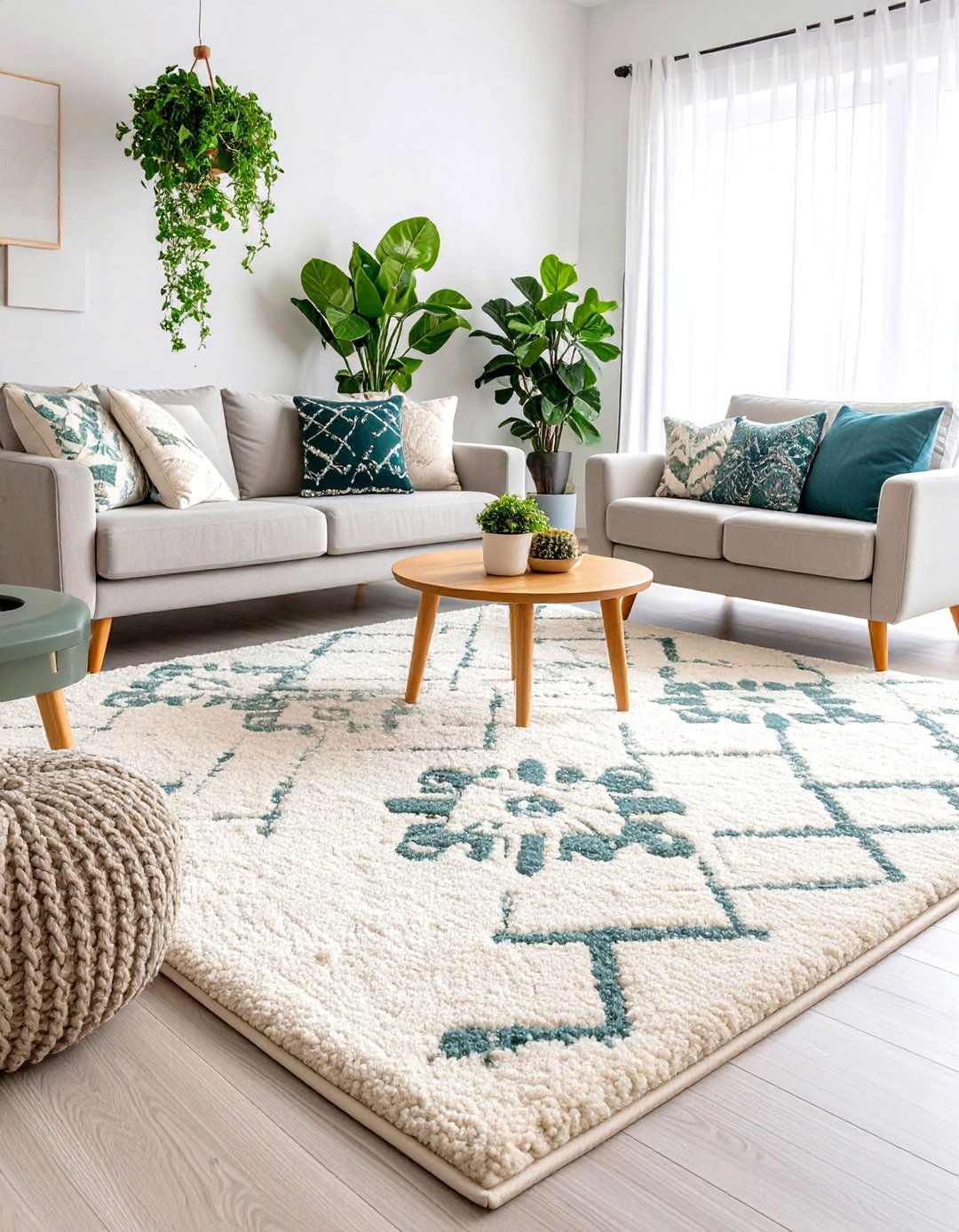
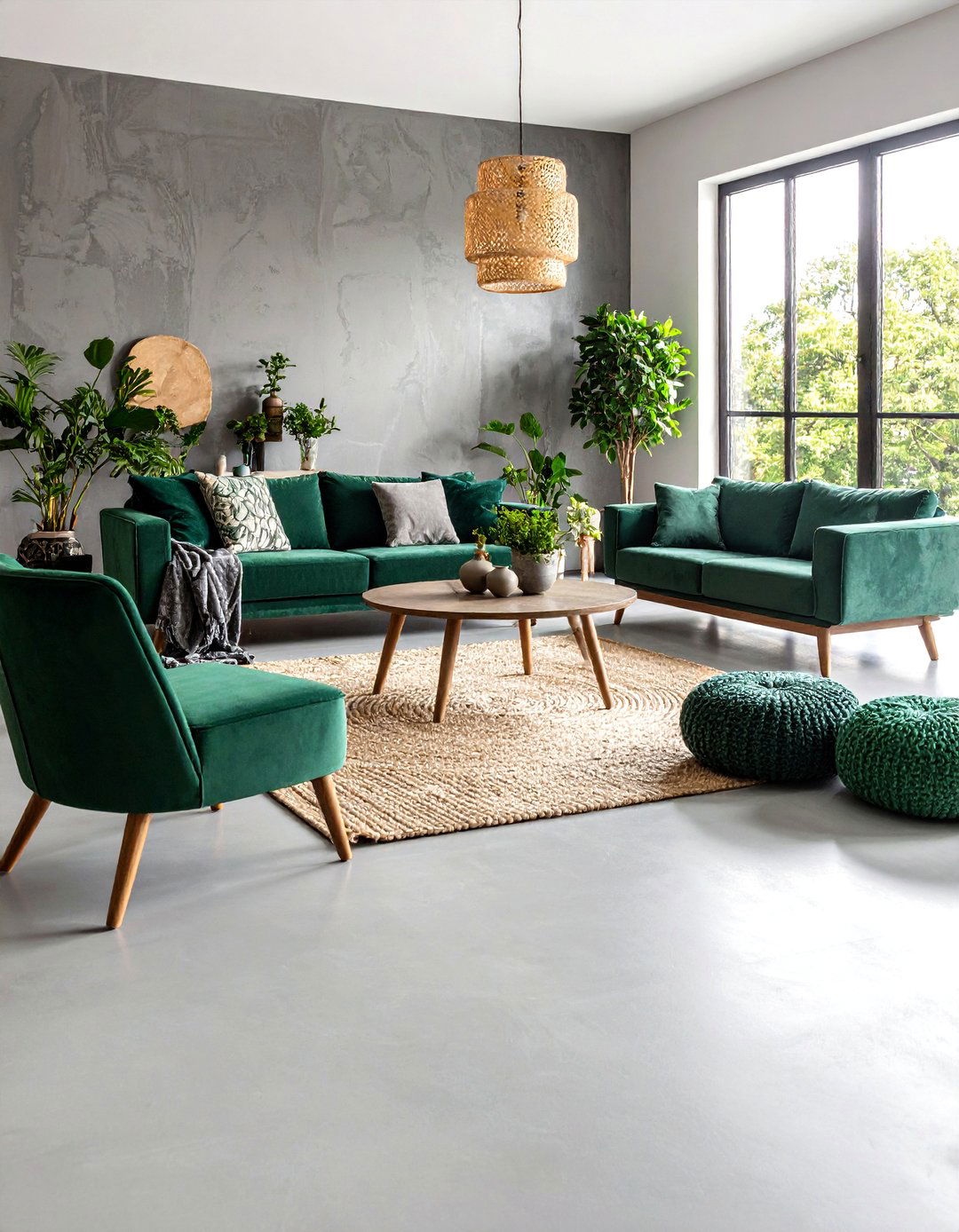
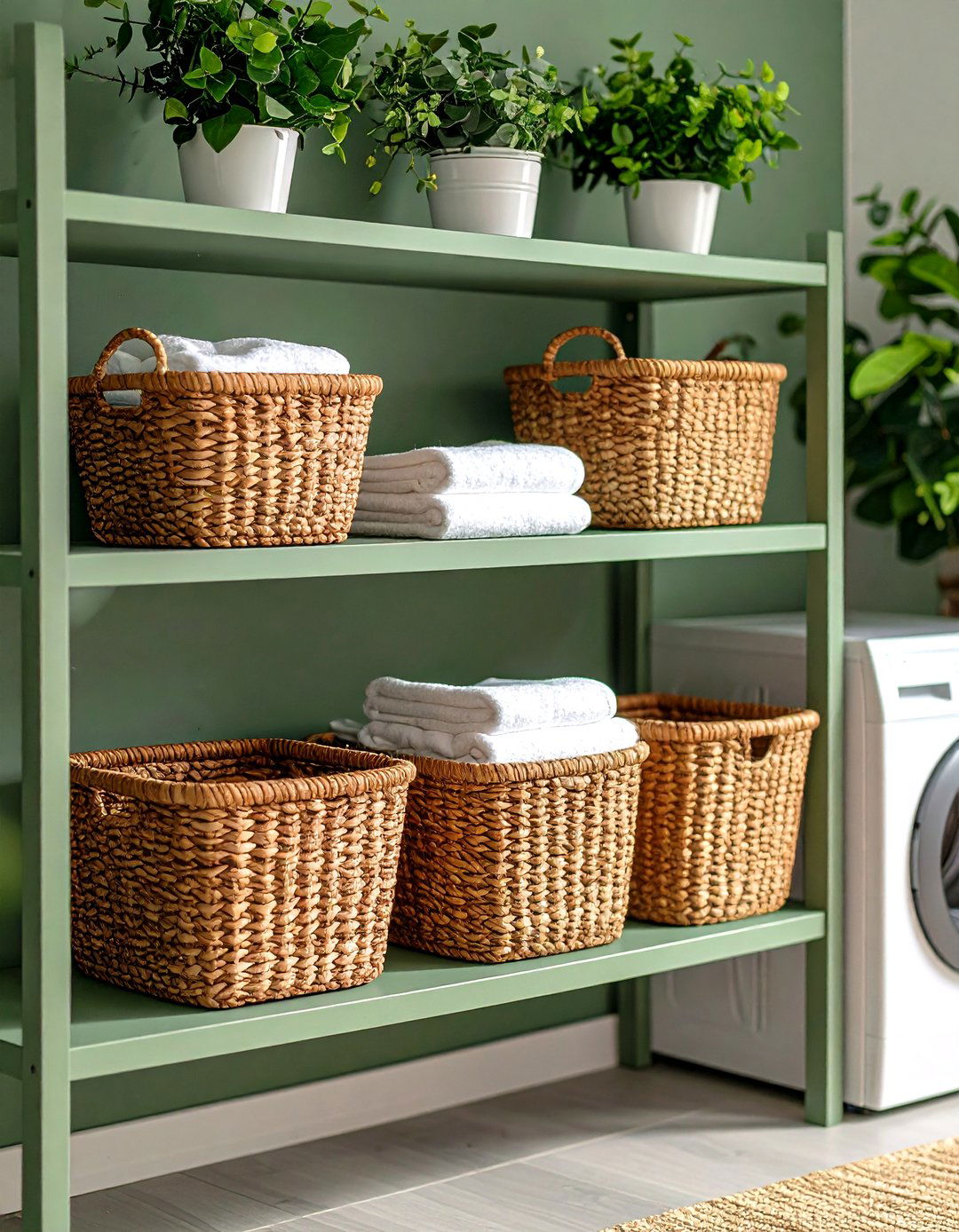
Leave a Reply